Want to join in? Respond to our weekly writing prompts, open to everyone.
Inserting Unicode in Emacs
from  dimiro1's notes
dimiro1's notes
This was a very nice surprise; I've never seen anything like it in any other editor.
To insert a Unicode character, use C-x 8 RET. An interactive menu will appear where you can search for the character you want by name.
For example, the command:
C-x 8 RET BANKNOTE WITH EURO SIGN RET

...inserts the 💶 character into the buffer:
Mind blowing... 🤯🤯🤯
from  Kroeber
Kroeber
#002276 – 22 de Agosto de 2025
A ciência e a cultura influenciam-se mas quase nunca andam sincronizadas, nem sequer ao mesmo ritmo. Cientistas investigam o sétimo sentido dos seres humanos, o tacto remoto, mas continuamos a dizer cinco sentidos, ignorando o sexto, a propriocepção, ou então usamos a expressão sexto sentido de forma figurativa, para significar percepções fora da realidade fisiológica.
Lay Awake
from  wystswolf
wystswolf

It is thought, not act—that is our undoing.
Kindness is the night carrying you in ether I lie awake within undone, undressed by thought alone.
Wonder where you rest — when wanting hums songs upon the skin, tattooed words unsaid mirrored head to head.
Hands wander, feeding quiet aches— beneath, within, where breath grows thin.
Carried you are like heat against the thigh— uninvited, relentless, unconfessed. bleeding over and into peace stirred to rupture.
practiced calm, possessed by silence, while a body learns to lie.
others see the face, not how pulse obeys thoughts not yours but of you— closeness becoming burn.
-
Twas once said: 'Truth need not be safe— your reality was reward.' So here I am, the boy— restraint frays and frays nights bleed to days.
Bright and deep no return down glowed amber and gold, let touch be what we learn: when the spark erupts there is no choice, only the waking night.
#confession #essay #story # journal #poetry #wyst #poetry #100daystooffset #writing #story #osxs #spain #travel
Un Partenaire
from DrFox
Je me décrirais comme un partenaire qui n’entre pas dans une relation pour y prendre possession, mais pour y habiter. Habiter le lien comme on habite un lieu vivant. Avec attention. Avec respect. Avec la conscience que rien n’est jamais acquis, ni l’amour, ni le désir, ni même la présence. Je ne crois pas aux contrats éternels signés sous la peur de la perte. Je crois aux accords renouvelés. À la fidélité choisie. À l’engagement qui se réécrit sans cesse parce qu’il est vivant.
L’homme que je suis en couple n’est pas un garant de sécurité émotionnelle au sens infantile du terme. Je ne viens pas réparer, colmater, rassurer à l’infini. Je viens rencontrer. Je viens marcher à côté. Je viens offrir un espace dans lequel l’autre peut respirer sans se sentir surveillée, évaluée, retenue. J’aime les femmes qui restent parce qu’elles le veulent, pas parce qu’elles ont peur de partir. Et je sais que cela implique un risque réel. Celui d’être quitté. Celui de ne pas être choisi un mois donné. J’accepte ce risque parce qu’il est le prix de la vérité.
Si je devais utiliser une image, je dirais que je propose une maison sans cadenas. Une maison chaude, solide, habitée, mais dont la porte n’est jamais verrouillée. Chaque mois, on se regarde et on se dit si on signe encore pour y vivre ensemble. Pas par calcul. Par désir. Par cohérence. Par joie. Ce n’est pas un bail juridique. C’est un acte intérieur. Un oui répété. Et parfois un non. Et je préfère mille fois un non honnête à un oui par confort.
Je suis un partenaire qui croit que le désir ne supporte pas la dette. Dès qu’il devient une obligation, il se fane. Dès qu’il est attendu, exigé, négocié, il se transforme en service rendu. Je n’attends pas qu’on me doive le désir. Je veux qu’on me l’offre. Libre. Spontané. Parfois débordant, parfois silencieux. Et j’accepte les saisons. Les creux. Les absences. Les reprises. Le désir n’est pas un robinet. C’est un animal sauvage. Il s’approche quand il se sent en sécurité et quand il n’est pas traqué.
J’ai connu la confusion entre liberté et fuite. Entre ouverture et dispersion. Entre désir vivant et agitation intérieure. Il y a une manière immature de vouloir tout garder ouvert parce qu’on ne veut rien perdre. Parce qu’on a peur de manquer. Parce qu’on cherche à se prouver qu’on existe encore dans le regard de l’autre. Cette liberté-là est bruyante. Elle consomme. Elle accumule. Elle laisse un goût de vide après coup. Je la connais. Je ne la méprise pas. Mais je ne la confonds plus avec la mienne.
La liberté que je propose aujourd’hui est plus sobre. Plus exigeante. Elle demande de savoir pourquoi on désire. D’où ça part. Ce que ça vient réparer ou célébrer. Elle demande de pouvoir dire non à une excitation qui n’est qu’un anesthésiant. Elle demande aussi de pouvoir dire oui à un désir qui dérange, qui déplace, qui oblige à parler vrai. Cette liberté-là n’est pas contre le lien. Elle le rend possible et plus beau. Parce qu’elle n’utilise pas l’autre comme un outil de régulation interne.
Je suis un partenaire qui parle. Pas pour expliquer. Ni pour gronder. Pour dire ce qui se passe en moi. Ce qui s’éteint. Ce qui s’allume. Ce qui résiste. Ce qui a peur. Je ne promets pas la stabilité émotionnelle parfaite. Je promets la lisibilité. On ne se perd pas dans le flou avec moi. On peut souffrir. Mais on sait pourquoi. Et on sait où on en est.
Je ne cherche pas une femme qui me complète. Je cherche une femme entière. Une femme qui n’a pas besoin de moi pour exister, mais qui me choisit pour partager. Une femme capable de rester même quand elle part. Et capable de partir même quand elle reste. Une femme qui sait que l’amour adulte n’est pas une fusion totale, mais une cohabitation consentie entre deux mondes distincts.
Être avec moi, ce n’est pas être tranquille au sens confortable. C’est être en mouvement. C’est être invitée à vérifier régulièrement si ce que nous vivons est encore juste. C’est accepter que rien ne soit figé, ni les rôles, ni les désirs, ni les formes. Mais c’est aussi être profondément respectée. Jamais utilisée. Jamais réduite. Jamais enfermée.
Si je devais résumer, je dirais que je suis un partenaire qui préfère être choisi chaque mois plutôt que promis pour toujours. Et qui, de son côté, choisit aussi. Pleinement. Sans retenue. Tant que c’est vivant. Tant que c’est vrai. Tant que l’on se regarde encore avec ce mélange rare de tendresse, de désir et de liberté assumée.
Granja landing in me: Observations and Thoughts (rec)
from  wystswolf
wystswolf

The harder I adventure, the more I see there is to adventure.
This is a collection of semi-readable notes from my first days in Portugal. Once settled, we moved from our hotel to stay with friends just south of Porto in Granja, Portugal. On one hand it's removed from the classically historic part of the city. On the other, We're living with locals, like a local. NO one speaks more english than 'yes' or 'no' or 'no English'!
So I'm buying bread and reading Portuguese poorly from my translation app.
They also live 4 blocks from the ocean. Not bad all things considered.
We have been on the Iberian peninsula for 6 days at this point. Jet lag is slowly fading, but just as I adapt to the new circadian rhythm, client work materializes and I've suddenly got to function living on WET while working on PST.
Wednesday Dec 17, 2025
I clawed from bed early and dashed into the winter light for a fifteen-minute walk. Then dashed into the city for a meeting with friends to organize for a public preaching. We are all volunteer Bible teachers and I was excited to engage in a new country.
After our meeting to organize at 10am, I left the apartment and went next door to buy an orange from one of the small shops that are ubiquitous here. I only had a twenty-euro bill, but the total was something like twenty cents. The shopkeeper just waved his hand and said, “You take.”
Yayyyy! Free orange.
Our ministry was refreshing and different. None of us are natives, so our 'territory' for preaching is english-speakers. Ex-pats, Africans and Indians. All foreigners. You can do a little racial profiling based on skin color, and generally, you'll find they are English speakers.
However, it isn't just thump them with a Bible and they love you. It is very important to just have a conversation. English speakers who are foreigners, LOVE to meet other foreign english-speakers. We're all in the same boat, essentially: We are accepted, even liked, but truth be told, the natives would rather we buy a magnet and then go back home.
And so, the common ground is just, 'hey, you're safe with me'. Not that Portuguese people aren't wonderful. They are. But, the world is a challenging place, and anything different creates friction.
So if we find a potential english speaker, we connect based solely on that point. As the conversation progresses, we look for ways to shift it to spiritual topics. Not hard, but not everyone is interested. So, sometimes you just talk about where you are from, the weather and what they think of the place, and you move on.
It's a very slow, meticulous work.
We have several enjoyable conversations and I meet a Catholic who is a Bible scholar and specializes in the first 300 years of the Catholic church. In the US, I RARELY meet scholars of Religion, so the conversation is fascinating.
He explains that his sect rejects Paul's letters of 1,2,3 John and Revelation based on the perception that they are too negative to be part of the Bible Canon.
I counter with the very positive aspects of the writings (the hope of the future) and he admits the appeal.
In the end we part amicably.
I meet several Muslims and others who are just happy I am happy to be in Portugal.
A successful morning. Preaching isn't only about helping others, it's about practicing and sharpening our following of Jesus example.
We stop for coffee and to get warm. Our friends don't like the coffee spot and my wife doesn't want to walk down to the water front. So, we hop in the car and dash home for a light lunch of vegetarian nachos.
Now, nothing against my friends or vegetarians in general: but nachos without meat: :–( They aren't terrible, but just call them nachos. The vegetarian moniker takes something away. Or maybe it was the lintels he added for protein.
Left me wanting a steak. A big fat salmon steak. Mmmmmm.
After lunch, it was time to explore and I made my way down to to the beach to knock on the door of the universe.
Walking on the beach, I learned my free orange wasn’t the win I thought it was. Peeling it, I noticed it had no smell, seeing it i realized it was dry and tasteless. I will learn later that you have to pick the oranges in season. can tell by the attached leaves.
C’est la vie.
So the birds got a free orange.
Isn’t every orange a bird eats a free orange?
I’ve never seen a sparrow with a debit card or a raven discussing exchange rates.
The early afternoon was filled with wandering and wondering. When the beach's winter novelty wore thing, I jumped a train back into Porto so I could drift through the cobblestone alleys and streets and think about the ancient structures in this city. What humble hands hewed that stone, and later stacked it against the centuries?
Did those hand-men think about how they would bear children, who would bear children, who would bear children—until finally, one day, some moon-faced white man would wonder about them even though they were long dead? How surprised they will be in the resurrection to learn of the history that happened to their city after they handed it to the next generations.
A walk on the beach, exploration of ruins, and some playing catch-up on managing notes and journals. I finish the afternoon back at the beach in a cafe with a very tall beer while I watched the surf pound the shore.
If the sea was sentient, I would surely think it had caught the beach with a lover—for hell hath no fury like the sea scorned, and it is relentless in it's assault on that sandy rocky stripe between terra and posiden's realm.
Client work called at 5:30, and I dutifully held on until it was time to leave for my meeting for worship at 7:30. I am used to a three minute drive. But here, the commute, with traffic, was nearly an hour!
We had an enjoyable time. Very relaxed and got to make some new friends.
Thursday, December 18, 2025
The next day started late. Working through the night has that effect.
The only thing on the map for the day was a surprise. Our friends booked a tour of a winery where they took about a mile of their old cellars and turned them into an art gallery. Thousands of works of art from Spain, southern Africa and around the world. The owner loved collecting art.
Bonus, they make amazing wine!!
But first, some client mop-up, then a dash out the door for our subterranean museum visit.
I was excited at the museum. And I have to say—I definitely could have stayed there all day.
The art was great, but the wine was irresistible: three glasses of sparkling brut, one rosé, and a fifth of a white, and I was positively ready to party.
We walked a mile and a half through old wine cellars. I found myself oddly drawn to the African art. How strange—and how telling—that their tombstones were ceramic penises for men and breast-like orbs for women. They had no written language, but they understood sex. And when it came to headstones, size definitely mattered. The more important you were, the bigger your representation.
Still, there were far more non-sexual pieces than phalluses. Masks and ebony carvings galore. In fact, the bulk of the collection was from sub-Saharan Africa.
Then there was the geode corridor—thousands of enormous geodes and crystals of every kind.
The tour ended with Portuguese artists, especially ceramicists. Loads of gorgeous, rich ceramics grouped by theme: birds, reptiles, food, flowers. And then these very curious bulls—not huge, about the size of a gallon jug. Shiny ceramic, each with a fill spigot behind the neck and a small twist handle at the shoulder.
The guide explained that you filled them with Aguardente Bagaceira (Portuguese moonshine), and when entertaining—once your guests agreed to imbibe—you’d have them hold a glass beneath the bull and turn the handle, whereupon the moonshine would run out of the bull’s endowment.
A strange, but he assured us, highly entertaining experience—especially after the first glass or two.
The art was fascinating in its diversity and origin. The collector clearly loved the southern African continent.
But the setting was even more captivating: 150-year-old tunnels where millions of bottles of wine had matured and made countless hearts happy—and no doubt broken a few as well.
The tunnels went on and on, dark and wet. There was a smell—sweet and damp. One section was so pungent and musky it made me cough. The sensation was overwhelming, like walking into an Indian kitchen that had vastly overused spices.
It was the same thousand feet as the geode and crystal collection, and I couldn’t tell whether the odor came from the rocks or from a particular wine once stored there.
The dark and the mystery were deeply appealing. I don’t know why I liked it so much. It wasn’t scary or dangerous, not even claustrophobic. The cleanliness, the art, the wine—it was the kind of place you naturally want to spend all day.
I pictured myself as Indiana Jones or Tom Sullivan, searching for a cross of the Knights Templar that would guide me to the next clue—or a missing page of the Hypnerotomachia Poliphili, carved into a stone stela, completing the mystery irrefutably.
The spell broke when, after a few hours, we ascended a winding staircase back to the living world and emerged—of course—through the gift shop.
Not an unpleasant ending. We toasted with glasses of a wonderful brut sparkling wine.
Since we were already south of Porto by an hour, it was an easy argument to convince me to ride up into the mountains to see the King’s Hunting Palace, now converted into an intensely posh hotel.
We arrived at dusk, passing through lovely Portuguese villages tourists rarely—if ever—see. How delightful to have local friends so willing to show us around.
The palace was incredibly ornate. Hardly six inches existed without some kind of decoration, sculpture, or visual interest. And it was huge. It would take a king’s wealth to build a structure like this—complete with a labyrinth garden and an impenetrable forest.
 Barrel room
Barrel room
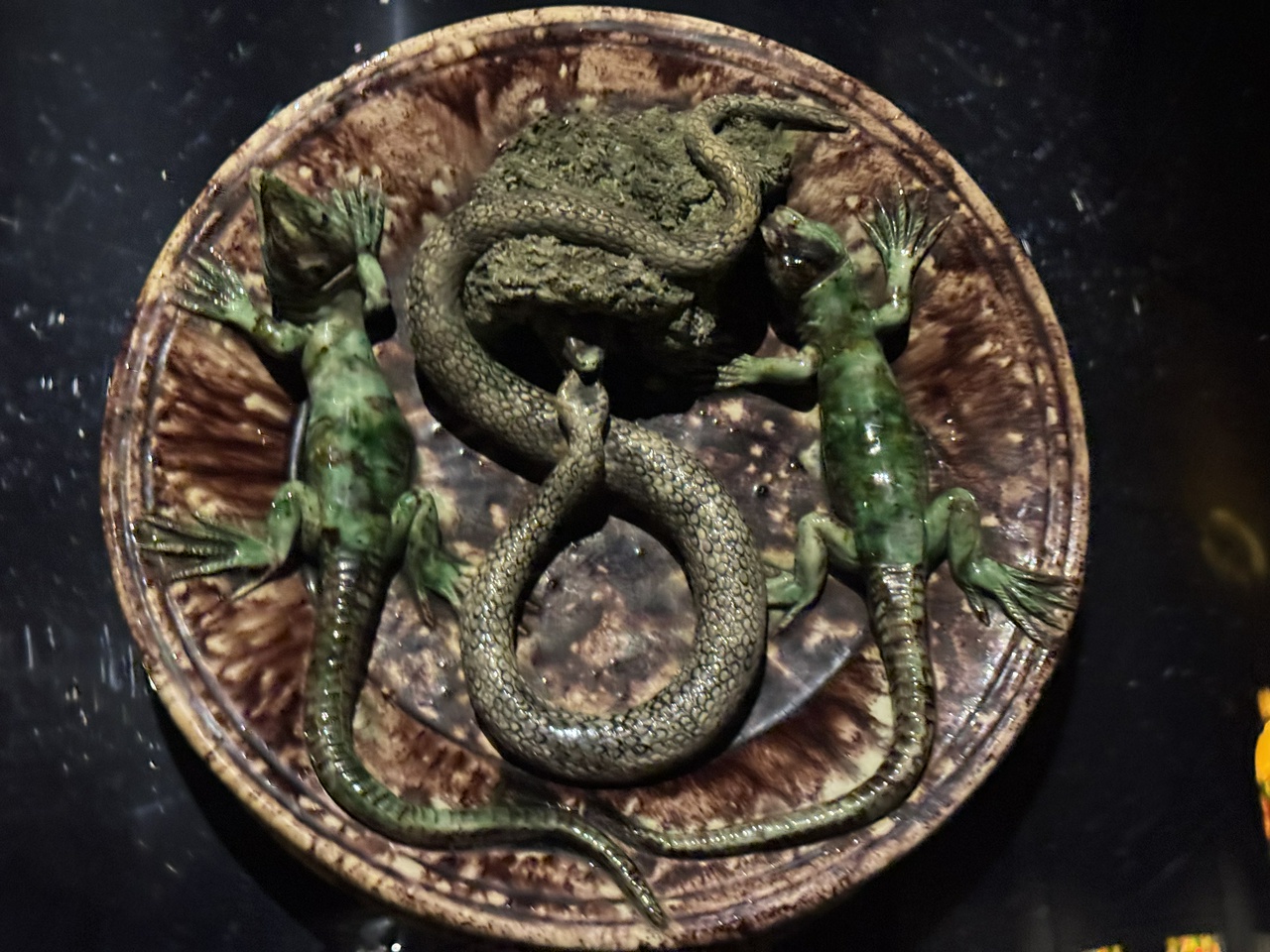 Snakes and lizards
Snakes and lizards
 Big barrel
Big barrel
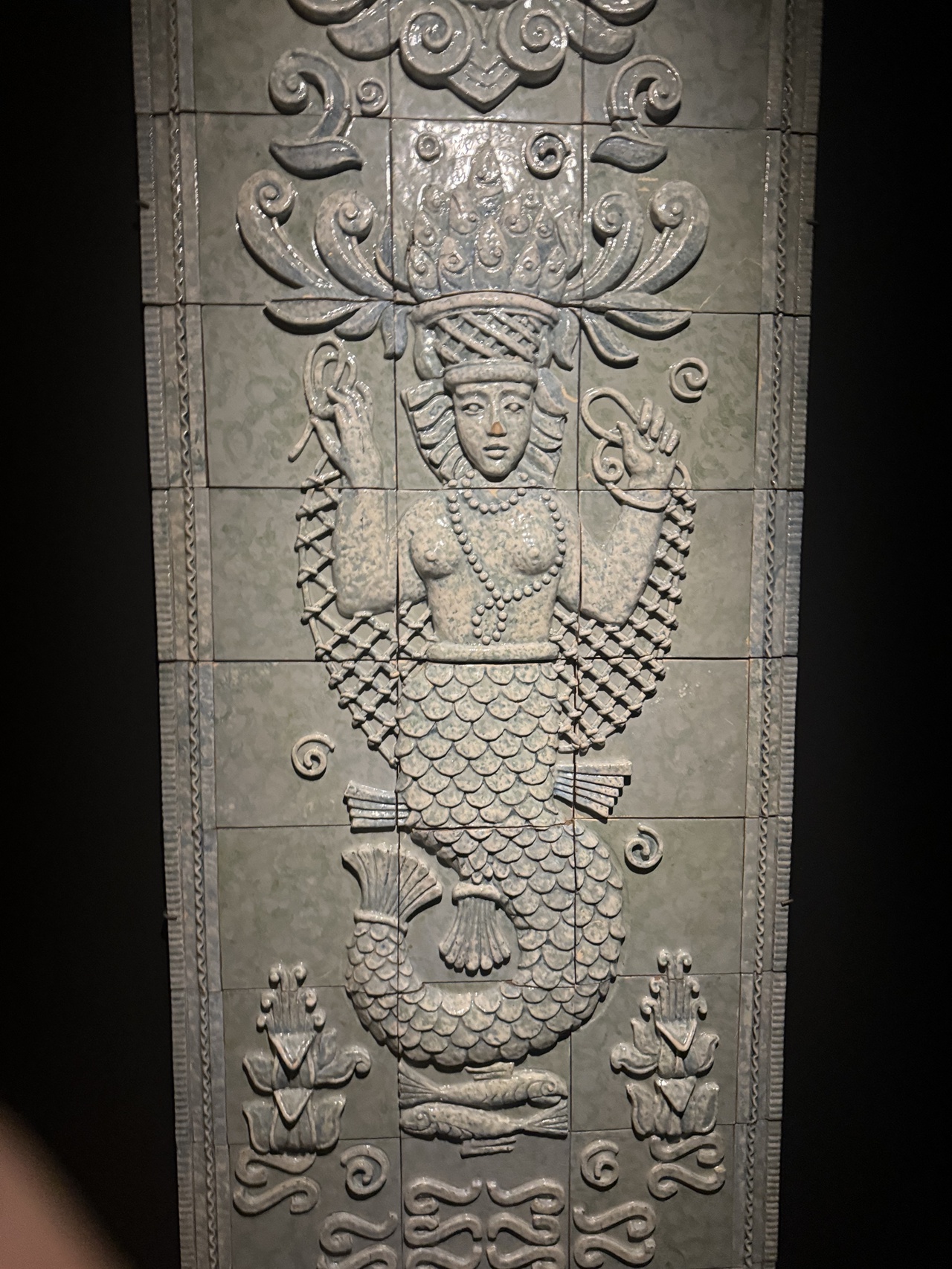 Mermaid
Mermaid
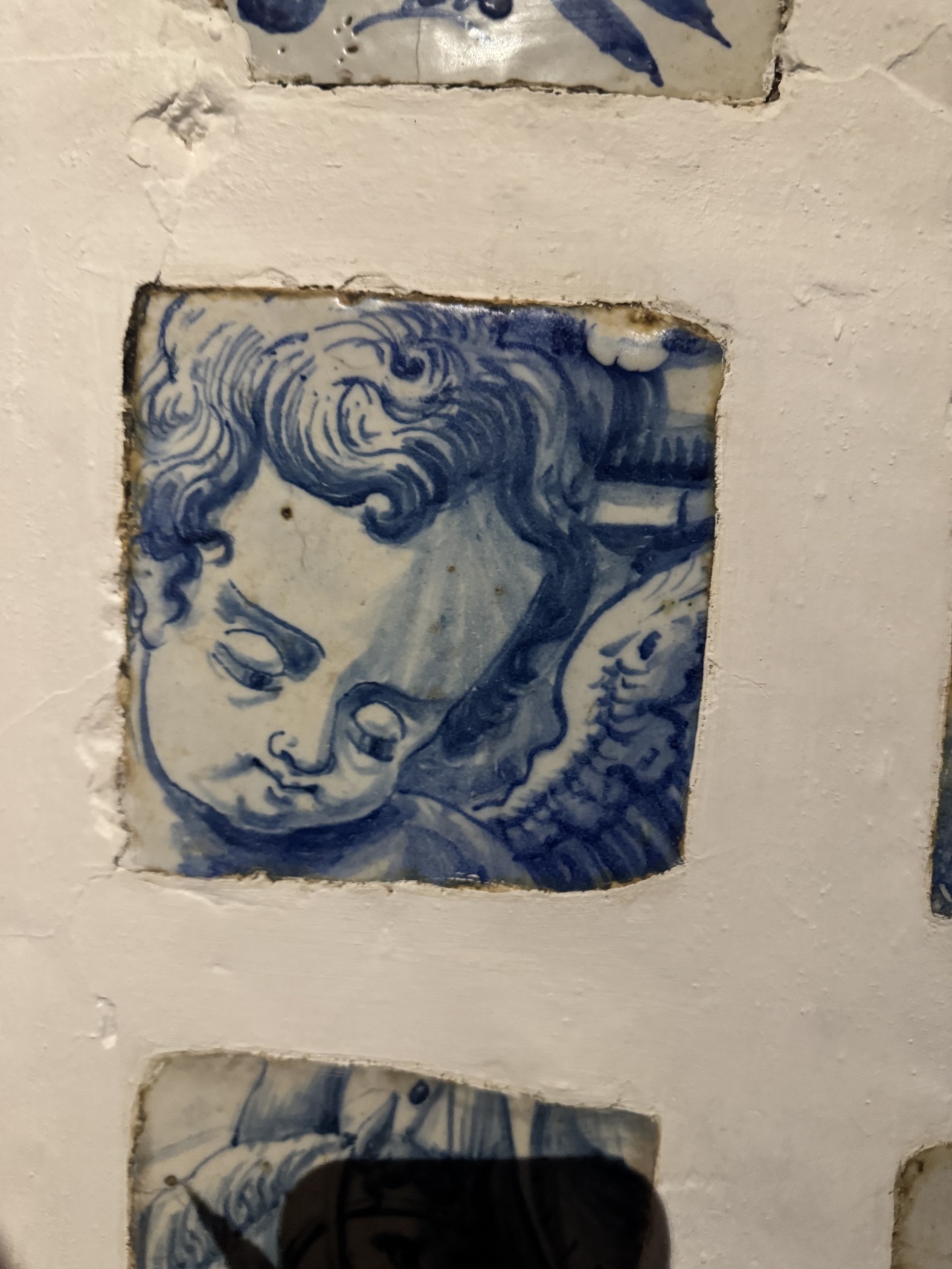 Tile faced
Tile faced
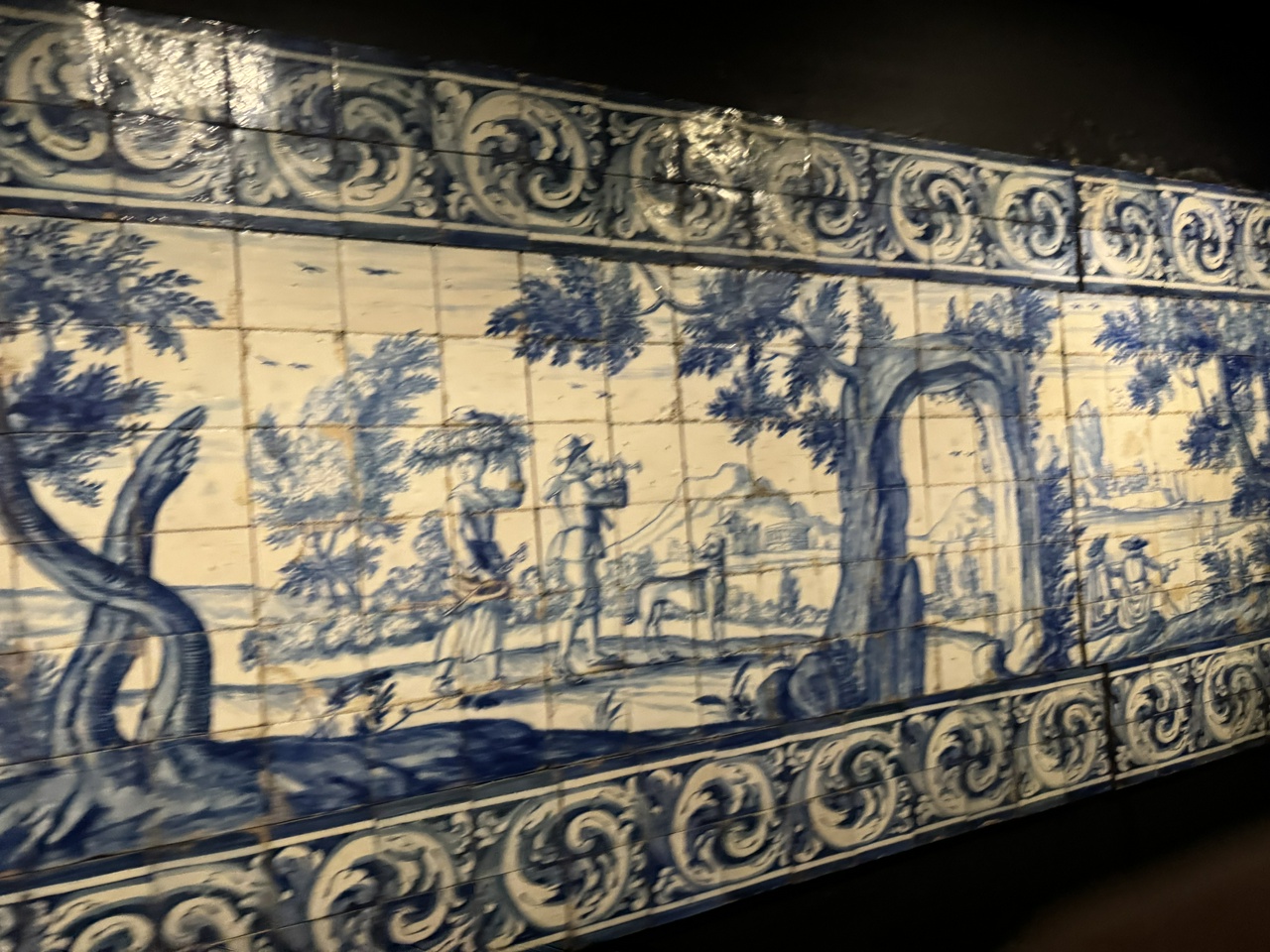 Bucolic scene
Bucolic scene
 Africa head
Africa head
 African Chalice
African Chalice
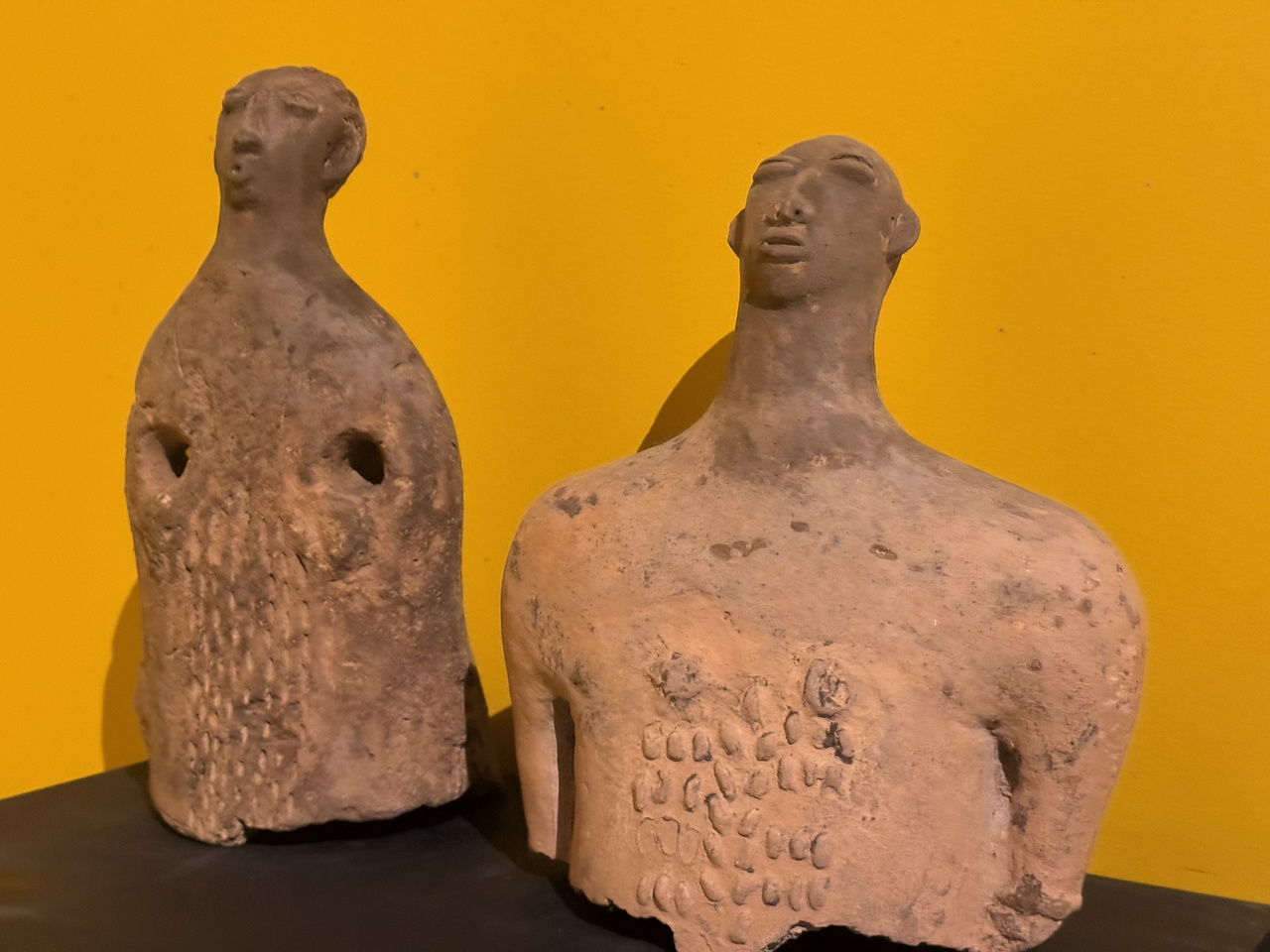 Terracotta heads
Terracotta heads
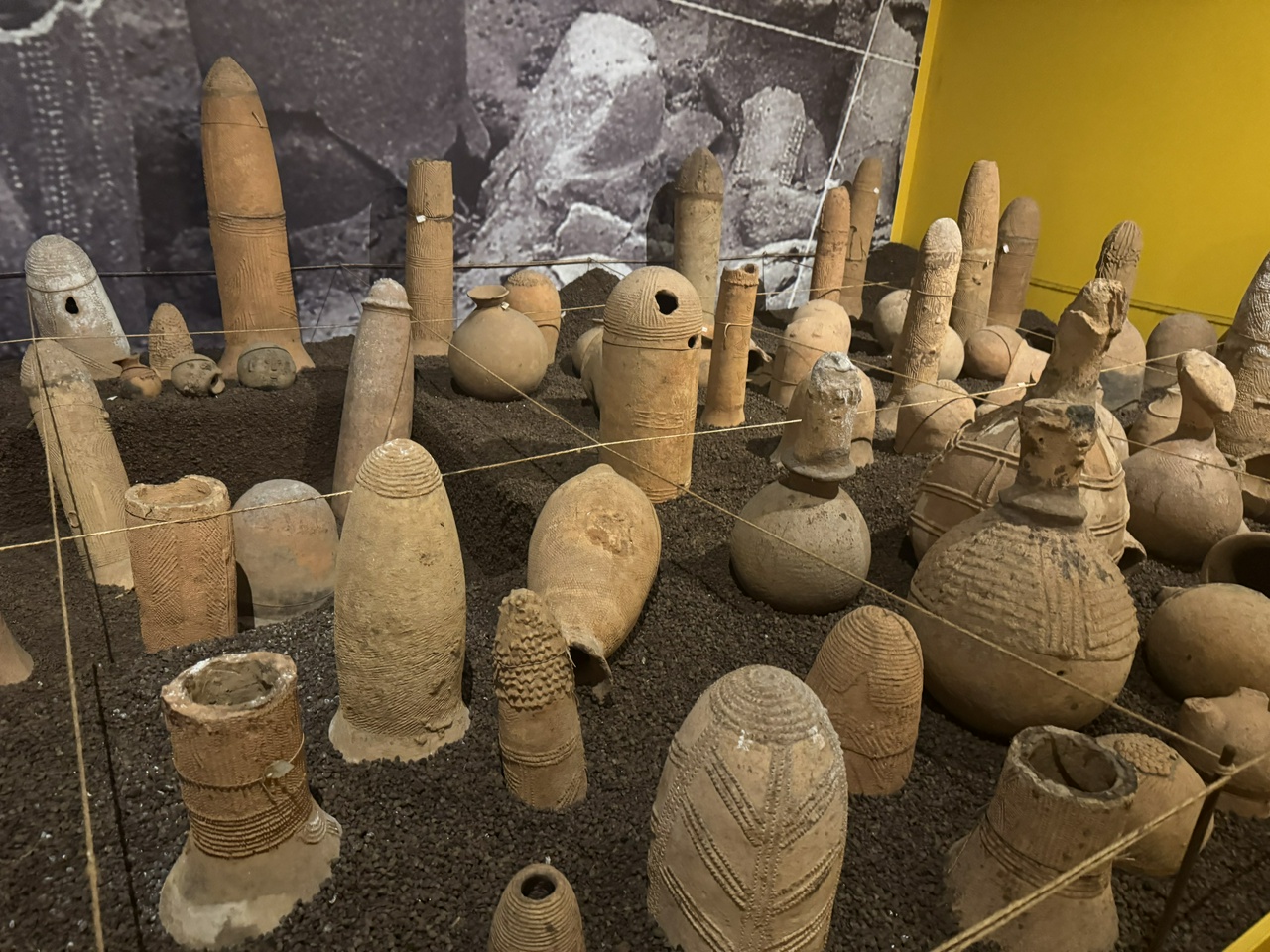 Phallic Cemetery
Phallic Cemetery
 Ivory sculpts
Ivory sculpts
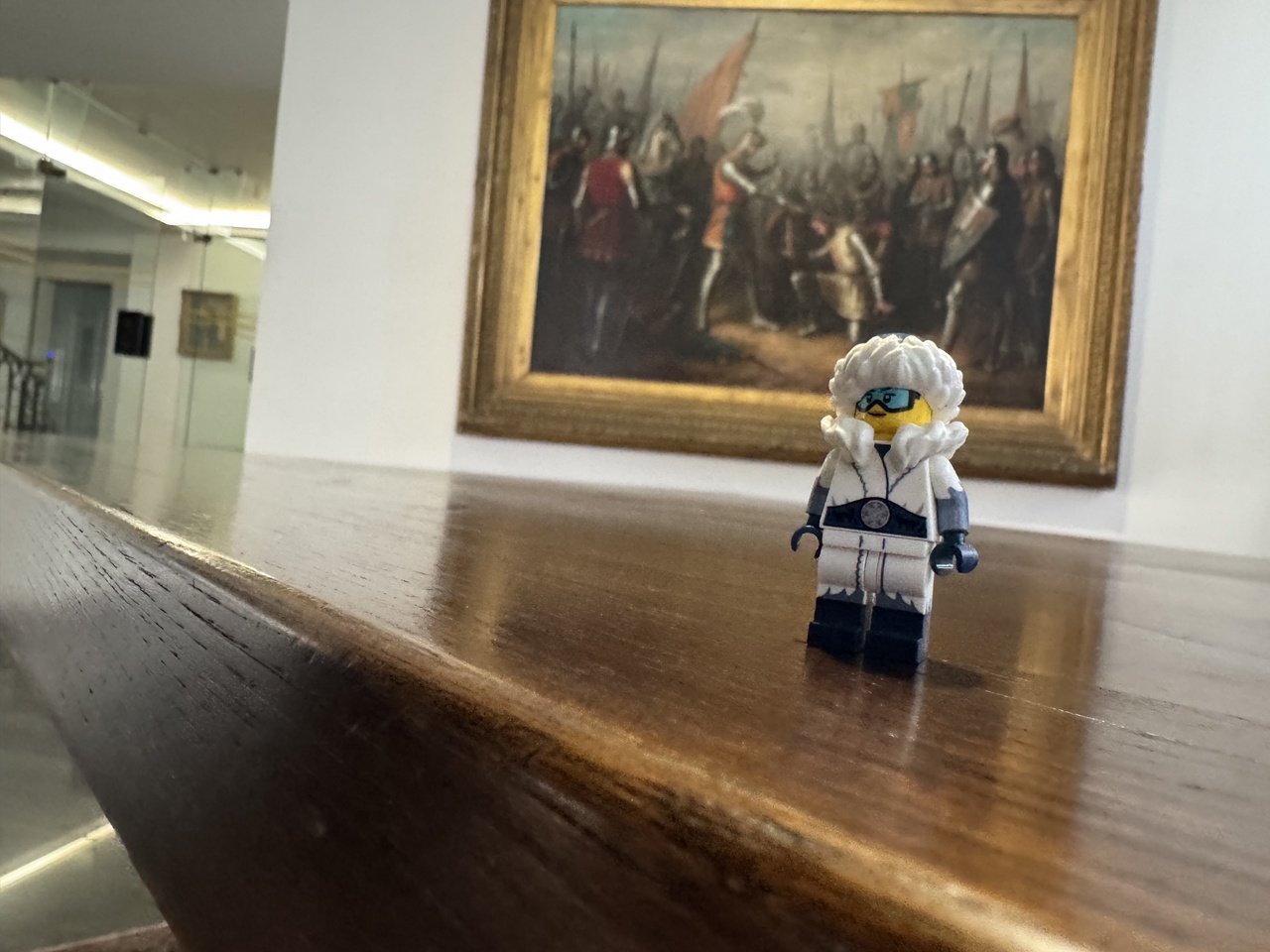 Sherpa-sharona
Sherpa-sharona
 Mc seaside
Mc seaside
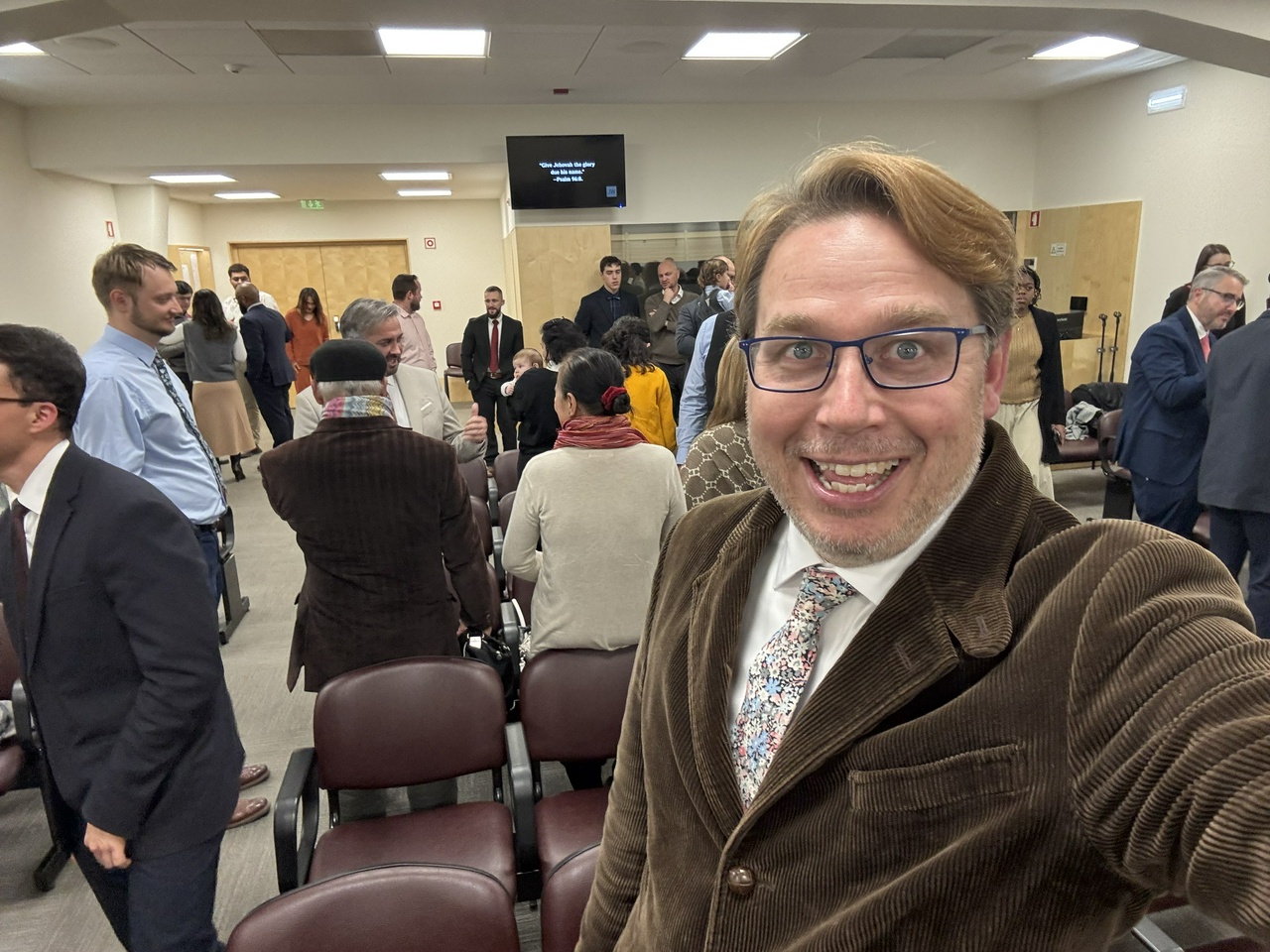 Wild Mike
Wild Mike
 Sharbeer
Sharbeer
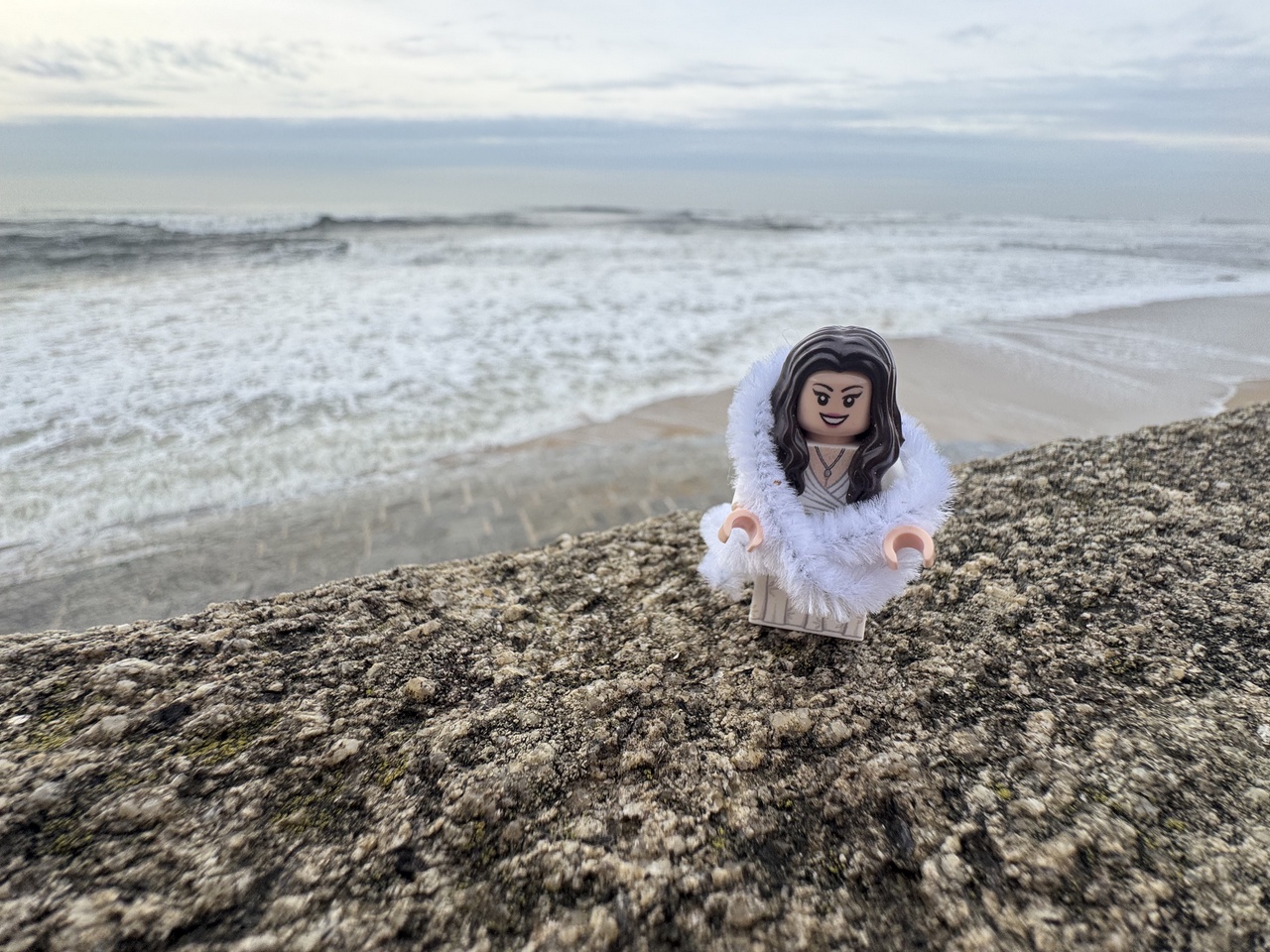 Shar ocean
Shar ocean
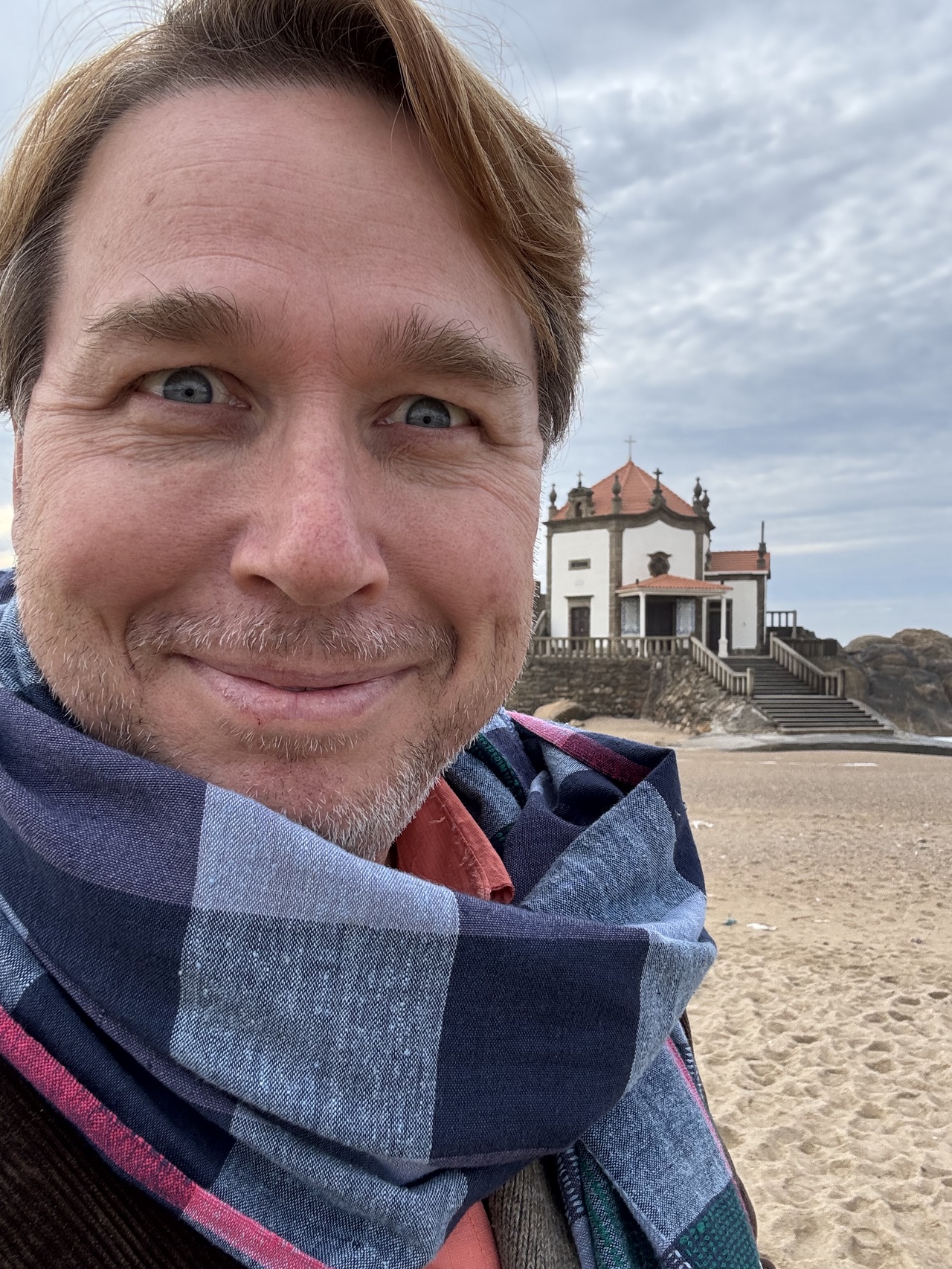 My church rock
My church rock
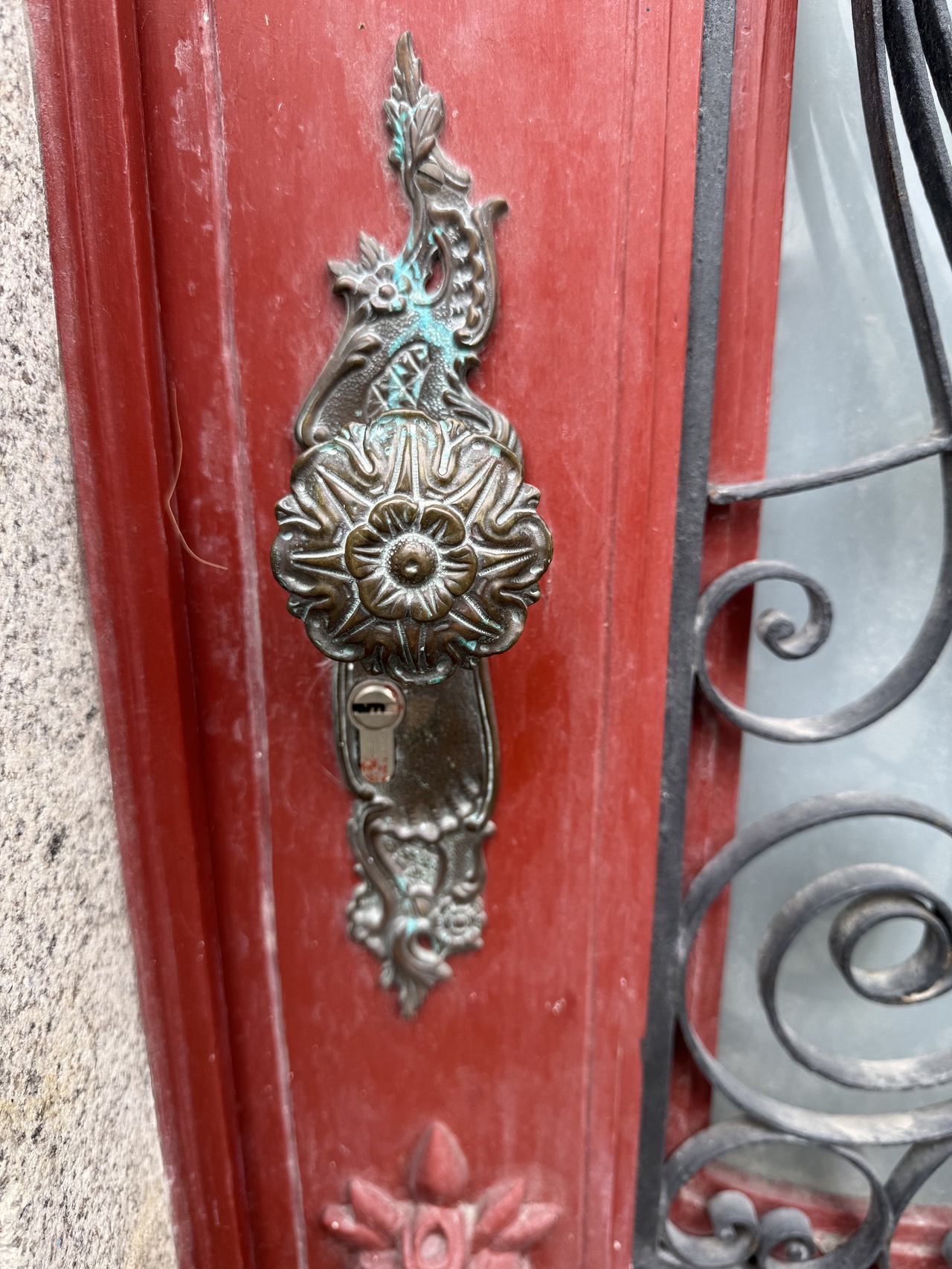 Doorknob
Doorknob
 Hummer
Hummer
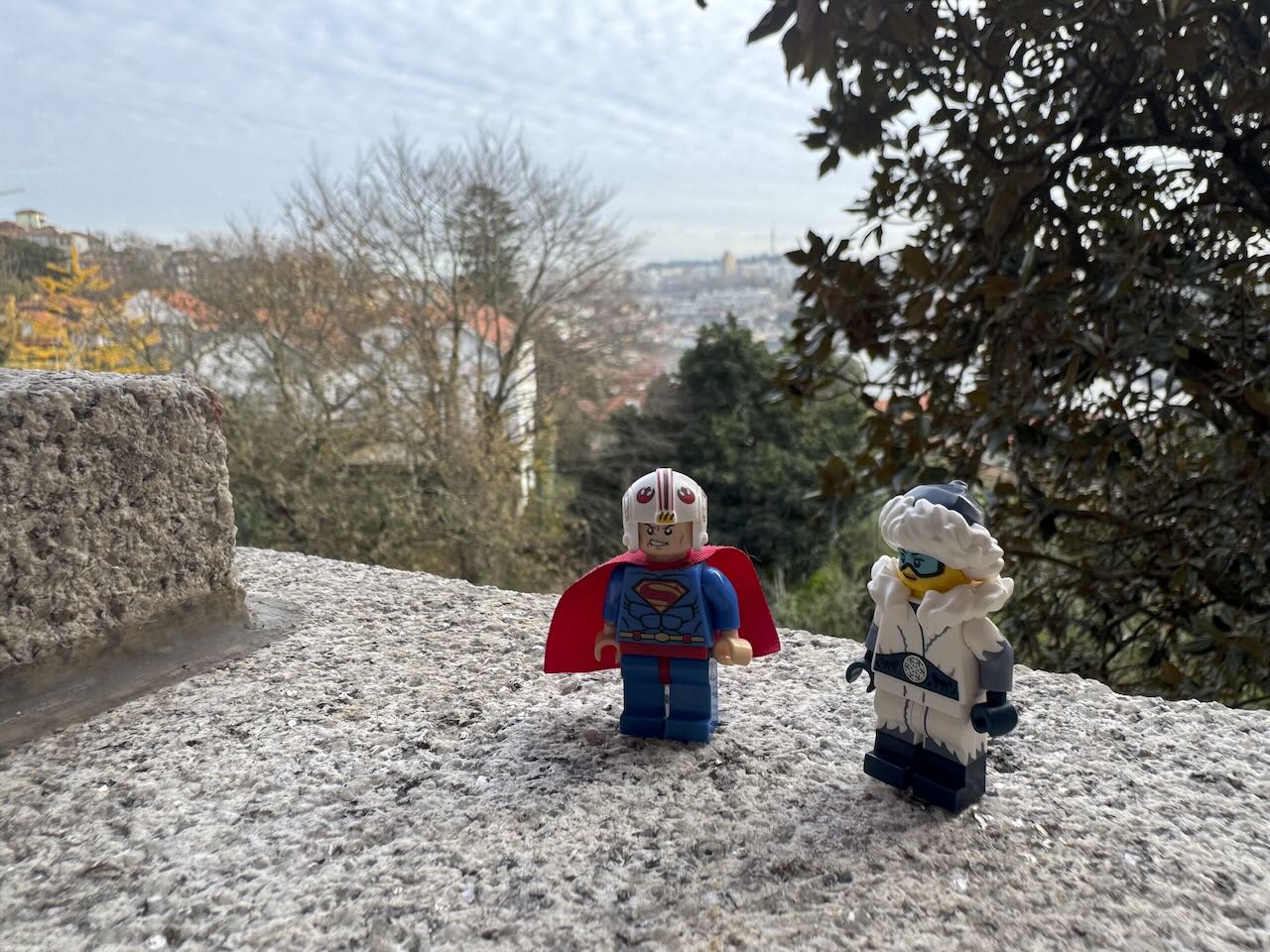 WYST
WYST
Christmas Eve
from An Open Letter
I’m not going to lie, I kinda hate Christmas. I feel like the grinch, because it’s just this hate because I never get to participate in it and I just have to watch from the outside. I understand that I’m not the only person in this position, as a lot of my friends don’t get to go home for it either, but it’s a weird kind of pain because I do have my family right here, but it’s just not one that I can really celebrate anything with. I know I really don’t have too many things to complain about in the grand scheme of things, but even things like buying a dream house and all that don’t stop this miserable feeling from being alone. I know that E would want to spend this time with me, but I want her to be happy and not have to also be dragged down by this.
El planeta
from  Bloc de notas
Bloc de notas
mira / si no encajas bien en este planeta no es porque seas extraterrestre sino porque muchas cosas están podridas y nosotros y los otros y los que vengan tendremos que gruñir / encajar / relajarnos y como no tenemos otro míralo todo lo que puedas redondo / lindo / perfecto
from  Un blog fusible
Un blog fusible
 “White forest” by Lars Falkdalen is licensed under CC BY-SA 2.0.
“White forest” by Lars Falkdalen is licensed under CC BY-SA 2.0.
perdue dans la forêt blanche les yeux au ciel pieds nus dans la neige partout les troncs livides à l'écorce de parchemin où aucun destin n'est écrit un pas après l'autre vers le sommeil le plus profond ou bien guidée par l'esprit de l'ours vers un autre matin
from kayakayss
Hujan turun tepat di lagu terakhir yang di bawakan. Penonton bersorak histeris, lampu-lampu panggung memantul di atas air, dan Rajendra… tentu saja tetap maju ke depan, membiarkan dirinya basah kuyup demi memuaskan crowd. Jaket hitamnya basah. Rambutnya basah. Dan hidungnya, seperti yang sudah ditebak semua orang yang mengenalnya, mulai memerah.
Begitu konser selesai dan member kembali ke backstage dan saat pintu baru saja terbuka saat Bunda langsung bersuara. “Rajendra Arsa Danapati!” Nada yang hanya muncul kalau dua hal terjadi antara bangga dan kesal dalam satu waktu.
Rajendra hanya sempat mengedip ketika handuk putih langsung mendarat di pundaknya, bukan, bukan dari sang Bunda, tapi dari seseorang yang sudah berdiri di depannya dengan dahi berkerut.
“Udah aku bilang apa?” Nayyala mengusap wajahnya cepat, gerakannya cekatan tapi tetap lembut. “Kalau hujan jangan maju ke depan. Kamu tuh gampang…”
“Flu,” sambung Rajen sambil tersenyum kecil dan mengusap pucuk kepala Nayyala lembut.
“Liat tuhh, hidung kamu udah merah, Jen…” Nayyala mendesah frustrasi sambil mengecek kening Rajendra dengan punggung tangannya. “Baru selesai konser aja udah demam kayak gini.”
Bunda ikut masuk menyerang, “Bandel banget emang nih anak. Bunda udah bilang, jangan gaya-gayaan kalau hujan. Nih liat, merah semua hidungnya gitu.”
Rajendra ingin sekali menahan tawa, tapi gagal karena batuk kecil muncul. Yang tentu saja membuat Nayya menatapnya lebih tajam. “Nah kan! AJEN IHHH.”
“…iya?”
“Jangan bercanda!” serunya lantang dan baru saat itu Rajendra terdiam.
“INI JUGA! Bukannya nyuruh temen temennya turun malah ngikut ujan-ujanan.” Nada Nayyala berubah, campuran peduli dan omelan manis ketika melihat sang kembaran Nalendra, ikut masuk dangan tubuh yang juga basah kuyup.
“Lakik lu tuh yang maju duluan kita mah ngikut kaptennya aja gimana.” Jawab Nalendra dengan senyum jahil khasnya.
“Lo tuh kalau lihat orang bego begini, jangan ikutan bego!” Nayyala melemparkan handuk ke dada Nalendra. “Cepetan keringin badan lo. Jangan bikin gue tambah mumet.”
Nalendra berdiri tegap pura-pura hormat. “Siap, ndoro.”
Selesai mengomeli saudaranya sendiri, fokus Nayyala kembali ke sumber kekhawatirannya, Rajendra.
Air yang masih menetes dari ujung rambutnya membuat wajah Rajendra terlihat lebih pucat. Nayyala menarik napas pendek, mendekat, lalu mengusap hidung Rajendra perlahan dengan handuk.
“Udah merah banget…” gumamnya, kali ini lebih lembut, lebih jujur. “Kenapa susah banget di bilangin si, Jen.”
Rajendra hanya bisa membiarkan dirinya diurus oleh Nayyala. Matanya turun, memperhatikan gadis di depannya. “Kamu marah, Shaa?”
“Aku khawatir,” jawab Nayyala tanpa menatapnya. Jemarinya pelan menyeka sisa air di sudut matanya. “Ganti baju sana. Aku udah siapin di ruang wardrobe. Jangan nunggu dingin dulu baru ganti.”
“Kamu yang siapin?”
Nada Rajendra jernih, terkejut tapi senang. Nayyala mengangguk kecil. “Iya. Jadi tolong… jangan bikin aku tambah khawatir. Ganti baju. Sekarang!”
Rajendra tak lagi bisa menahan senyumnya, ia tersenyum sangat tampan untuk siapa pun yang meilhatnya.
“Iya, Sayang.”
Nayyala berhenti. Berkedip. “BENER BENER NIH ANAK! BURUAN GANTI BAJUNYA IHHH.” Malu, jelas Nayyala cukup malu hingga membuat wajah dan telinganya memerah sempurna.
Rajendra hanya memiringkan kepala dan semakin mendekat. “Kan tadi kamu janji peluk. Mana?”
Nayya memukul lengannya pelan. “Pergi. Ganti baju. Sekarang, Rajendra Arsa.”
Rajendra pun tertawa lepas dan berjalan menuju ruang wardrobe sambil mengusap hidungnya sendiri yang masih merah, masih basah, tapi dengan senyum tipis yang sulit dihapus.
Karena hujan boleh saja mengguyur panggung dan dirinya, tapi hangatnya perhatian Nayyala-lah yang benar-benar membuat malamnya begitu sempurna.
from Unvarnished diary of a lill Japanese mouse
JOURNAL 25 décembre 2025 #auberge
La neige a repris. Elle est généreuse. Pas question de traîner dehors, même les skieurs ont renoncé. On ne voit rien à dix mètres, c'est des trucs on se perd facilement et après salut... par ce froid tu ne tiens pas longtemps. Alors c'est papotage général dans la grande salle, une super ambiance. Papi raconte des histoires du pays. Je vais servir le thé.
C’est l'heure ou tout est calme ici, chacun s'est retiré dans le confort des chambres. La nuit impose le silence. Nous serons encore les dernières couchées. Oh nous aimons ce rôle. Nous veillons sur le repos de tous.
L'obscurité est troublée seulement par la petite lampe du onsen privé que nous apercevons de notre petite fenêtre. Nous nous dévêtons dans la chambre pour passer un yukata. Il faudra vite courir, nos serviettes dans les bras, avant de pouvoir nous plonger avec délice dans l'eau chaude, qui nous paraîtra presque brûlante par contraste.
Christmas Fireworks Midnight
from  Justina Revolution
Justina Revolution
I woke up at midnight to the sound of the Uruguayans setting off massive amounts of fireworks. My phone had a depleted battery so I got up plugged it in and proceeded to practice 8 Animals Baguazhang and the 10 Hands form. Perfect Baguazhang forms built on reality based principles. It was good. I feel my body, mind, and spirit uniting. I am happy to be practicing these soft fist styles that help me to generate more power through blending.
White Crane for Explosive power, Tai Chi and Baguazhang for soft power. Explosion and absorption. I am here writing all of these strange little mini blogs. Journaling in public. It’s fascinating stuff.
The Armor You Wear When No One Is Watching
from Douglas Vandergraph
Ephesians 6 is often treated like a closing flourish, a poetic ending where Paul gives believers a memorable image and then signs off. But that reading misses something crucial. This chapter is not an ending at all. It is the point of convergence. Everything Paul has been building toward—identity, unity, holiness, maturity, love, endurance—funnels into this one final reality: the Christian life is lived under pressure, and what you wear internally determines whether you stand or collapse when that pressure arrives.
What makes Ephesians 6 so arresting is that it is not written to frightened believers hiding in caves. It is written to people who are working jobs, raising families, navigating power structures, and trying to live faithfully in ordinary, complicated, often unfair circumstances. Paul does not tell them to escape the world. He tells them how to stand in it.
The language of battle in this chapter makes some people uncomfortable, and others overly dramatic. But Paul is neither alarmist nor symbolic for symbolism’s sake. He is being precise. He is naming the invisible forces that shape visible outcomes. He is saying, in effect, that many of the struggles you think are external are actually being decided internally long before they ever show up in your calendar, your relationships, or your thoughts at night.
Ephesians 6 begins by grounding faith in the most practical places imaginable: family relationships and work. Children and parents. Slaves and masters. Authority and obedience. Power and responsibility. Paul does not spiritualize faith away from real life. He embeds it directly into the most emotionally charged dynamics people experience. He understands that spiritual formation does not happen in a vacuum. It happens under authority. It happens under pressure. It happens when obedience costs something.
The way Paul addresses children is not sentimental. He speaks to them as moral agents. Obedience is framed not merely as compliance, but as alignment with God’s design for flourishing. Honor, in this sense, is not blind submission. It is the recognition that God works through structure, even imperfect structure, to form humility and trust. The promise attached to obedience is not a bribe; it is a revelation of how reality works. There are ways of living that create life, and ways that slowly corrode it.
Parents are then warned not to weaponize authority. This is critical. Authority, in Paul’s framework, is always accountable to God. When authority provokes, humiliates, or crushes, it ceases to reflect God’s character. Spiritual formation collapses when discipline is divorced from love. Paul understands that nothing drives people away from God faster than authority that demands obedience while displaying none of God’s patience or mercy.
Then Paul addresses work relationships, and this is where modern readers often struggle. The language reflects the ancient world, but the principle transcends it. Paul is not endorsing injustice. He is confronting how believers live within systems they did not create but must navigate. He does not tell workers to define themselves by resentment, nor masters to define themselves by control. Instead, he reframes power itself. Everyone, regardless of position, answers to the same Lord. That single truth destabilizes every hierarchy built on fear.
What Paul is doing here is subtle and revolutionary. He is saying that faith does not wait for ideal conditions. It manifests under imperfect ones. It is easy to talk about trust when you are in control. It is harder when you are not. Ephesians 6 insists that the authenticity of faith is revealed most clearly when circumstances are least accommodating.
And then Paul shifts gears. Having anchored faith in the daily realities of home and work, he pulls back the curtain and reveals the larger battlefield. “Be strong in the Lord and in the strength of His might.” This is not motivational language. It is diagnostic. Paul is telling believers that strength sourced from personality, intellect, or willpower will eventually fail. The command is not to be strong in yourself, but to be strengthened by something beyond you.
This distinction matters. Many people exhaust themselves trying to live out Christian principles using natural energy. They confuse effort with endurance. Paul does not call believers to try harder. He calls them to be outfitted differently. Strength, in this passage, is not something you generate. It is something you receive and wear.
The armor metaphor that follows is not theatrical. Roman soldiers were a common sight in Paul’s world. The imagery would have been immediately recognizable. But Paul repurposes it in a way that strips it of violence and fills it with moral clarity. The battle he describes is not against flesh and blood. That single line dismantles centuries of misdirected aggression. Paul is explicit: people are not the enemy. Systems, lies, distortions, and spiritual forces that corrupt truth are.
This is where many believers go wrong. They fight people when they are meant to resist lies. They attack personalities when they are meant to confront deceptions. They exhaust themselves in arguments that were never the real battlefield to begin with. Paul refuses to let believers confuse the visible opponent with the invisible struggle underneath it.
The armor itself is deeply intentional. Each piece corresponds to an aspect of spiritual reality that must be secured if a believer is going to remain standing over time. The belt of truth is not about having correct opinions. It is about living without internal fracture. Truth holds everything together. When truth is compromised, every other piece becomes unstable. People who live with hidden contradictions eventually unravel, no matter how sincere they appear.
Truth, in Paul’s framework, is not merely factual accuracy. It is alignment between belief, speech, and action. It is the refusal to live double lives. A person may quote Scripture fluently and still be unbelted, spiritually speaking, if their inner life is governed by fear, ego, or dishonesty. Truth is what allows everything else to stay in place when pressure hits.
The breastplate of righteousness follows, and this is often misunderstood. Righteousness here is not moral perfection. It is right standing with God lived out in consistent integrity. The breastplate protects the heart, the center of will and desire. When a person’s sense of worth is rooted in God’s grace rather than performance, they become resilient. Accusation loses its power. Shame no longer dictates identity.
This is why so many believers are vulnerable to spiritual collapse even while appearing active. They serve, volunteer, speak, and post—but internally, they are still negotiating their worth. The breastplate is not earned; it is worn. It is the daily choice to stand in what God declares true, even when emotions argue otherwise.
The shoes of readiness given by the gospel of peace are perhaps the most surprising element. Armor usually suggests aggression, but Paul centers movement in peace. The believer is not meant to charge forward fueled by outrage or fear. They are meant to move steadily, grounded in reconciliation with God. Peace here is not passivity. It is stability. It is the ability to walk into chaos without becoming chaotic.
People who lack this readiness are easily destabilized. Every conflict feels personal. Every disagreement feels threatening. But when peace anchors your steps, you do not need to dominate conversations or defend yourself endlessly. You can stand firm without being rigid. You can move forward without trampling others.
The shield of faith is not optimism. It is trust exercised under fire. Paul describes it as capable of extinguishing flaming arrows, which implies that attacks will come. Faith is not denial of danger. It is confidence in God’s faithfulness when danger is present. Many believers collapse not because they lack belief, but because they expect faith to eliminate struggle rather than sustain them through it.
Faith, as Paul presents it, is not static. It is raised intentionally. A shield does nothing if left on the ground. Faith must be engaged. It must be brought to bear against fear, doubt, accusation, and despair. This requires practice. It requires remembering God’s past faithfulness and choosing to trust Him again in the present moment.
The helmet of salvation guards the mind. This is critical. Salvation is not only about the future; it reshapes how you think now. A person who does not understand their salvation is vulnerable to every intrusive thought, every lie about their identity, every moment of despair. The helmet is assurance. It is clarity about who you are and where your life is ultimately headed.
Many spiritual battles are lost at the level of thought long before they manifest in behavior. Paul understands this. He knows that if the mind is unguarded, everything else will eventually follow. Salvation, rightly understood, anchors the mind in hope. It reminds believers that their story is not defined by the present chapter alone.
Finally, the sword of the Spirit is introduced, and it is the only offensive element—but even here, the imagery is restrained. The sword is the word of God, not human opinion. It is not used to wound people, but to confront deception. Scripture, when rightly handled, cuts through confusion. It exposes false narratives. It speaks truth into places where fear has distorted perception.
But this sword is not effective in the hands of someone unfamiliar with it. Scripture must be internalized, not merely quoted. It must shape imagination and conscience. Otherwise, it becomes a blunt instrument rather than a precise tool.
Paul ends this section not with more armor, but with prayer. This is essential. Prayer is not an add-on. It is the environment in which the armor functions. Without prayer, truth becomes rigid, righteousness becomes self-righteousness, peace becomes avoidance, faith becomes presumption, salvation becomes abstraction, and Scripture becomes noise.
Prayer keeps the believer connected to the source of strength. It keeps the armor from becoming costume. It keeps faith relational rather than mechanical.
Ephesians 6 is not about preparing for some distant, dramatic spiritual confrontation. It is about how you live when no one is applauding, when obedience is costly, when authority feels unfair, when relationships are strained, and when the temptation to disengage is strong. It is about what holds you together when life presses hard against you.
The armor is not for display. It is for endurance. It is not about looking powerful. It is about remaining faithful.
And perhaps most importantly, Paul emphasizes standing. Over and over again, he returns to that word. Stand. Having done all, stand. The goal is not domination or conquest. It is faithfulness. It is remaining upright when everything else tries to knock you down.
That is the quiet strength of Ephesians 6. It does not promise ease. It promises stability. It does not offer escape. It offers resilience. It does not call believers to win arguments. It calls them to remain grounded in truth, love, and trust in God when the battle is unseen and the outcome is not immediate.
In a world that measures success by visibility and speed, Ephesians 6 measures it by faithfulness and endurance. It reminds believers that the most important battles are often fought in silence, and the armor that matters most is worn long before the day begins.
That is where Paul leaves us—not with fear, but with clarity. Not with anxiety, but with resolve. Not with spectacle, but with the steady, quiet confidence of those who know what they are standing in.
What Paul ultimately reveals in Ephesians 6 is that standing is not a passive posture. It is active resistance against forces that seek to erode clarity, conviction, and courage over time. Standing requires intention. It requires awareness. It requires a refusal to drift. In many ways, drifting is the real enemy Paul is addressing. No one collapses spiritually all at once. People erode. They slowly loosen their grip on truth. They slowly compromise peace. They slowly replace prayer with distraction. Ephesians 6 is written to interrupt that erosion.
Paul’s repeated insistence on standing suggests that the pressure believers face is not constant chaos, but steady resistance. It is not always dramatic temptation. Often it is fatigue. Weariness. The quiet whisper that faithfulness no longer matters as much as it once did. This is why the armor is not optional. It is daily wear for those who intend to endure.
One of the most overlooked aspects of this chapter is how communal it is. Paul does not frame this armor as something an isolated individual puts on in solitude. He writes to a body. The language is plural. The standing he envisions is corporate as well as personal. Believers stand together, reinforcing one another’s resolve, reminding one another of truth when memory fails. Lone soldiers are vulnerable. Community is part of the defense.
This is why prayer at the end of the passage is not only personal devotion, but intercession. Paul urges believers to pray for one another, to remain alert, to persevere together. Spiritual battles intensify when people disconnect. Isolation weakens discernment. Community sharpens it. This is not incidental. It is foundational.
Paul’s request for prayer for himself is striking. Here is a man who has seen miracles, endured suffering, planted churches, and written Scripture—yet he asks others to pray that he would speak boldly and clearly. This dismantles the myth of spiritual self-sufficiency. Even the most mature believers remain dependent. Strength is not independence from God or others. It is sustained reliance.
Ephesians 6 also quietly confronts the temptation to measure spiritual success by outcomes. Paul does not say, “Put on the armor so you will win quickly.” He says, “Put on the armor so you can stand.” That distinction matters. Faithfulness is not always followed by visible victory. Sometimes it is followed by endurance. Sometimes obedience changes circumstances. Sometimes it simply preserves integrity within them.
This reframes disappointment. Many believers feel spiritually defeated not because they have failed, but because they expected immediate resolution. Paul offers a different metric. If you are still standing in truth, still anchored in peace, still trusting God when the outcome is unclear, you have not lost. You are doing exactly what this passage calls you to do.
There is also a profound humility embedded in Paul’s description of spiritual conflict. By insisting that the struggle is not against flesh and blood, he removes the believer’s permission to demonize people. This is deeply countercultural. It requires restraint in speech, patience in disagreement, and compassion even when wronged. The armor protects against becoming what you oppose.
When believers forget this, they often become combative, suspicious, and harsh—traits that feel like strength but are actually signs of spiritual vulnerability. Paul’s armor produces steadiness, not hostility. It enables clarity without cruelty. Conviction without contempt.
Another subtle truth in Ephesians 6 is that the armor does not cover everything. There is no protection for the back. Paul assumes forward-facing engagement. Retreat, in this framework, is not the default response. But neither is reckless advance. Standing means remaining present, faithful, and oriented toward God even when withdrawal feels easier.
This is particularly relevant in seasons when faith feels costly. When obedience brings misunderstanding. When integrity limits opportunity. When truth invites resistance. Ephesians 6 does not promise that these moments will be rare. It prepares believers to meet them without losing themselves.
The passage also reshapes how believers understand spiritual growth. Growth is not merely learning more doctrine or accumulating experiences. It is becoming someone who can withstand pressure without compromising identity. It is learning to hold tension without breaking. It is developing the ability to remain faithful when faithfulness is quiet, unseen, and unrewarded.
Paul’s imagery invites believers to examine not just what they believe, but how they live when belief is tested. Are they grounded in truth, or driven by reaction? Are they clothed in righteousness, or motivated by fear of judgment? Do they move with peace, or are they constantly braced for conflict? Is their faith active, or dormant? Is their mind anchored in hope, or vulnerable to despair? Is Scripture shaping their responses, or merely decorating their language?
These are not abstract questions. They surface in everyday moments. In conversations. In decisions. In reactions. In silence.
Ephesians 6 is not about becoming invincible. It is about becoming unmovable in the things that matter most. Paul knows that circumstances will shift. Relationships will change. Systems will fail. But a believer anchored in God’s strength can remain steady through it all.
The chapter ends not with triumphalism, but with blessing. Peace. Love. Faith. Grace. These are the true outcomes of a life lived armored in God. Not dominance. Not control. But a deep, abiding stability rooted in trust.
Paul’s final words remind believers that grace is not merely the beginning of faith; it is the sustaining force that carries it through every season. Grace is what makes the armor wearable day after day. Without it, faith becomes exhausting. With it, endurance becomes possible.
Ephesians 6 ultimately invites believers into a quiet kind of courage. The courage to remain faithful when no one is watching. The courage to resist lies without becoming bitter. The courage to trust God’s strength when personal strength runs thin. The courage to stand—not because the battle is easy, but because God is faithful.
That is the armor Paul describes. Not flashy. Not theatrical. But deeply effective. Worn daily. Lived quietly. Proven over time.
And in a world constantly shifting beneath our feet, that kind of steadfastness is not only rare—it is powerful.
Watch Douglas Vandergraph’s inspiring faith-based videos on YouTube
Support the ministry by buying Douglas a coffee
Your friend, Douglas Vandergraph
#Faith #ChristianLiving #BibleStudy #Ephesians6 #SpiritualFormation #StandingFirm #Endurance #ChristianFaith
The Grassroots Revolution: Local AI Meetups Rewriting the Rules
from  SmarterArticles
SmarterArticles

In a packed auditorium at Vancouver's H.R. MacMillan Space Centre on a crisp October evening, 250 people gathered not for a corporate product launch or venture capital showcase, but for something far more radical: a community meetup about artificial intelligence. There were no slick keynotes from Big Tech executives, no million-dollar demos. Instead, artists sat alongside researchers, students chatted with entrepreneurs, and someone's homemade algorithm competed for attention with discussions about whether AI could help preserve Indigenous languages.
This wasn't an anomaly. Across the globe, from San Francisco to Accra, from Berlin to Mumbai, a quiet revolution is reshaping how ordinary people engage with one of the most consequential technologies of our time. Local AI meetups and skill-sharing events are proliferating at unprecedented rates, creating grassroots networks that challenge the notion that artificial intelligence belongs exclusively to elite universities and trillion-dollar corporations. These gatherings are doing something remarkable: they're building alternative governance structures, developing regional toolchains, establishing ethical norms, and launching cooperative projects that reflect local values rather than Silicon Valley's priorities.
The numbers tell part of the story. Throughout 2024, Vancouver's grassroots AI community alone hosted 13 monthly meetups attracting over 2,000 total attendees. Data Science Connect, which began as a grassroots meetup in 2012, has evolved into the world's largest data and AI community, connecting more than 100,000 data practitioners and executives. Hugging Face, the open-source AI platform, drew over 5,000 people to what its CEO called potentially “the biggest AI meetup in history” in San Francisco. But beyond attendance figures lies something more profound: these communities are fundamentally reimagining who gets to shape AI's future.
The Vancouver Model
The Vancouver AI community's journey offers a masterclass in grassroots organising. What started with 80 people crammed into a studio in January 2024 grew to monthly gatherings of 250-plus at the Space Centre by year's end. But the community's significance extends far beyond headcount. As organisers articulated in their work published in BC Studies Journal, they built “an ecosystem where humans matter more than profit.”
This philosophy manifests in practical ways. Monthly meetups deliberately avoid the pitch-fest atmosphere that dominates many tech gatherings. Instead, they create what one regular attendee describes as “high energy, low pressure: a space where AI isn't just code but culture.” The format spotlights people “remixing AI with art, community, and some serious DIY spirit.” Researchers present alongside artists; established professionals mentor students; technical workshops sit comfortably next to philosophical debates about algorithmic accountability.
The impact is measurable. The community generated over £7,500 in hackathon prizes throughout 2024, incubated multiple startups, and achieved something perhaps more valuable: it spawned autonomous sub-communities. Surrey AI, Squamish AI, Mind AI & Consciousness, AI & Education, and Women in AI all emerged organically as participants recognised the model's value and adapted it to their specific contexts and interests. This wasn't top-down franchise expansion but genuine grassroots proliferation, what the organisers call “de facto grassroots ecosystem emerging from below.”
By August 2024, the community formalised its structure as the BC AI Ecosystem Association, a nonprofit that could sustain and scale the work whilst maintaining its community-first ethos. The move illustrates a broader pattern: successful grassroots AI communities often evolve from informal gatherings to structured organisations without losing their foundational values.
The Skills Revolution
Traditional AI education follows a familiar path: university degrees, corporate training programmes, online courses consumed in isolation. Community meetups offer something fundamentally different: peer-to-peer learning embedded in social networks, hands-on experimentation, and knowledge exchange that flows in multiple directions simultaneously.
Research on AI collaboration reveals striking differences between casual tool users and what it terms “strategic AI collaborators.” The latter group, which often emerges from active community participation, approaches AI “as a creative partner or an entire team with a range of specialised skills.” They're 1.8 times more likely than simple AI users to be seen as innovative teammates. More tellingly, strategic collaborators take the 105 minutes per day they save through AI tools and reinvest it in deeper work: learning new skills and generating new ideas. Those in the most advanced collaboration category report that AI has increased their motivation and excitement about work.
Community meetups accelerate this evolution from user to collaborator. In Vancouver, participants don't just attend talks; they contribute to hackathons, collaborate on projects, and teach each other. At Hugging Face's massive San Francisco gathering, attendees weren't passive consumers of information but active contributors to open-source projects. The platform's Spaces feature enables developers to create and host interactive demos of their models, with underlying code visible to everyone, transforming AI development “from a black-box process into an open, educational experience.”
The career impact is substantial. In 2024, nearly 628,000 job postings demanded at least one AI skill, with the percentage of all job postings requiring AI skills increasing from 0.5 percent in 2010 to 1.7 percent in 2024. More dramatically, job postings mentioning AI increased 108 percent between December 2022 and December 2024. Yet whilst two-thirds of leaders say they wouldn't hire someone without AI skills, only 39 percent of users have received AI training from their companies. The gap drives professionals towards self-directed learning, often through community meetups and collaborative projects.
LinkedIn data shows a 142-fold increase in members adding AI skills like Copilot and ChatGPT to their profiles and a 160 percent increase in non-technical professionals using learning courses to build AI aptitude. Community meetups provide the social infrastructure for this self-directed education, offering not just technical knowledge but networking opportunities, mentorship relationships, and collaborative projects that build portfolios.
From Weekend Projects to Real-World Impact
If regular meetups provide the consistent social fabric of grassroots AI communities, hackathons serve as pressure cookers for rapid innovation. Throughout 2024, community-organised AI hackathons demonstrated remarkable capacity to generate practical solutions to pressing problems.
Meta's Llama Impact Hackathon in London brought together over 200 developers across 56 teams, all leveraging Meta's open-source Llama 3.2 model to address challenges in healthcare, clean energy, and social mobility. The winning team developed Guardian, an AI-powered triage assistant designed to reduce waiting times and better allocate resources in accident and emergency departments through intelligent patient intake and real-time risk assessments. The top three teams shared a £38,000 prize fund and received six weeks of technical mentorship to further develop their projects.
The Gen AI Agents Hackathon in San Francisco produced DataGen Framework, led by an engineer from Lucid Motors. The project addresses a critical bottleneck in AI development: creating synthetic datasets to fine-tune smaller language models, making them more useful without requiring massive computational resources. The framework automates generation and validation of these datasets, democratising access to effective AI tools.
Perhaps most impressively, India's The Fifth Elephant Open Source AI Hackathon ran from January through April 2024, giving participants months to work with mentors on AI applications in education, accessibility, creative expression, scientific research, and languages. The theme “AI for India” explicitly centred local needs and contexts. Ten qualifying teams presented projects on Demo Day, with five prizes of ₹100,000 awarded across thematic categories.
These hackathons don't just produce projects; they build ecosystems. Participants form teams that often continue collaborating afterwards. Winners receive mentorship, funding, and connections that help transform weekend prototypes into sustainable ventures. Crucially, the problems being solved reflect community priorities rather than venture capital trends.
From Global South to Global Solutions
Nowhere is the power of community-driven AI development more evident than in projects emerging from the Global South, where local meetups and skill-sharing networks are producing solutions that directly address regional challenges whilst offering models applicable worldwide.
Darli AI, developed by Ghana-based Farmerline, exemplifies this approach. Launched in March 2024, Darli is a WhatsApp-accessible chatbot offering expert advice on pest management, crop rotation, logistics, and fertiliser application. What makes it revolutionary isn't just its functionality but its accessibility: it supports 27 languages, including 20 African languages, allowing farmers to interact in Swahili, Yoruba, Twi, and many others.
The impact has been substantial. Since creation, Darli has aided over 110,000 farmers across Ghana, Kenya, and other African nations. The platform has handled 8.5 million interactions and calls, with more than 6,000 smartphone-equipped farmers engaging via WhatsApp. The Darli Helpline currently serves 1 million listeners receiving real-time advice on everything from fertilisers to market access. TIME magazine recognised Darli as one of 2024's 200 most groundbreaking inventions.
Farmerline's approach offers lessons in truly localised AI. Rather than simply translating technical terms, they focused on translating concepts. Instead of “mulching,” Darli uses phrases like “putting dead leaves on your soil” to ensure clarity and understanding. This attention to how people actually communicate reflects deep community engagement rather than top-down deployment.
As Farmerline CEO Alloysius Attah explained: “There are millions of farmers in rural areas that speak languages not often supported by global tech companies. Darli is democratising access to regenerative farming, supporting farmers in their local languages, and ensuring lasting impact on the ground.”
Similar community-driven innovations are emerging across the Global South. Electric South collaborates with artists and creative technologists across Africa working in immersive media, AI, design, and storytelling technologies through labs, production, and distribution. The organisation convened African artists to develop responsible AI policies specifically for the African extended reality ecosystem, creating governance frameworks rooted in African values and contexts.
Building Regional Toolchains
Whilst Big Tech companies release flagship models and platforms designed for global markets, grassroots communities are building regional toolchains tailored to local needs, languages, and contexts. This parallel infrastructure represents one of the most significant long-term impacts of community-led AI development.
The open-source movement provides crucial foundations. LAION, a nonprofit organisation, provides datasets, tools, and models to liberate machine learning research, encouraging “open public education and more environment-friendly use of resources by reusing existing datasets and models.” LF AI & Data, a Linux Foundation initiative, nurtures open-source AI and data projects “like a greenhouse, growing them from seed to fruition with full support and resources.”
These global open-source resources enable local customisation. LocalAI, a self-hosted, community-driven, local OpenAI-compatible API, serves as a drop-in replacement for OpenAI whilst running large language models on consumer-grade hardware with no GPU required. This democratises access to AI capabilities for communities and organisations that can't afford enterprise-scale infrastructure.
Regional communities are increasingly developing specialised tools. ComfyUI, an open-source visual workflow tool for image generation launched in 2023 and maintained by community developers, turns complex prompt engineering and model management into a visual drag-and-drop experience specifically designed for the Stable Diffusion ecosystem. Whilst not tied to a specific geographic region, its community-driven development model allows local groups to extend and customise it for particular use cases.
The Model Context Protocol, supported by GitHub Copilot and VS Code teams alongside Microsoft's Open Source Programme Office, represents another community-driven infrastructure initiative. Nine sponsored open-source projects provide frameworks, tools, and assistants for AI-native workflows and agentic tooling, with developers discovering “revolutionary ways for AI and agents to interact with tools, codebases, and browsers.”
These toolchains matter because they provide alternatives to corporate platforms. Communities can build, modify, and control their own AI infrastructure, ensuring it reflects local values and serves local needs rather than maximising engagement metrics or advertising revenue.
Community-Led Governance
Perhaps the most crucial contribution of grassroots AI communities is the development of ethical frameworks and governance structures rooted in lived experience rather than corporate PR or regulatory abstraction.
Research on community-driven AI ethics emphasises the importance of bottom-up approaches. In healthcare, studies identify four community-driven approaches for co-developing ethical AI solutions: understanding and prioritising needs, defining a shared language, promoting mutual learning and co-creation, and democratising AI. These approaches emphasise “bottom-up decision-making to reflect and centre impacted communities' needs and values.”
One framework advocates a “sandwich approach” combining bottom-up processes like community-driven design and co-created shared language with top-down policies and incentives. This recognises that purely grassroots efforts face structural barriers whilst top-down regulation often misses crucial nuances of local contexts.
In corporate environments, a bottom-up, self-service ethical framework developed in collaboration with data and AI communities alongside senior leadership demonstrates how grassroots approaches can scale. Conceived as a “handbook-like” tool enabling individual use and self-assessment, it familiarises users with ethical questions in the context of generative AI whilst empowering use case owners to make ethically informed decisions.
For rural AI development, ethical guidelines developed in urban centres often “miss critical nuances of rural life.” Salient values extend beyond typical privacy and security concerns to include community self-reliance, ecological stewardship, preservation of cultural heritage, and equitable access to information and resources. Participatory methods, where community members contribute to defining ethical boundaries and priorities, prove essential for ensuring AI development aligns with local values and serves genuine needs.
UNESCO's Ethical Impact Assessment provides a structured process helping AI project teams, in collaboration with affected communities, identify and assess impacts an AI system may have. This model of ongoing community involvement throughout the AI lifecycle represents a significant departure from the “deploy and hope” approach common in commercial AI.
Community-based organisations face particular challenges in adopting AI ethically. Recent proposals focus on designing frameworks tailored specifically for such organisations, providing training, tools, guidelines, and governance systems required to use AI technologies safely, transparently, and equitably. These frameworks must be “localised to match cultural norms, community rights, and workflows,” including components such as fairness, transparency, data minimisation, consent, accessibility, bias audits, accountability, and community participation.
The Seattle-based AI governance working group suggests that developers should be encouraged to prioritise “social good” with equitable approaches embedded at the outset, with governments, healthcare organisations, and technology companies collaborating to form AI governance structures prioritising equitable outcomes.
Building Inclusive Communities
Gender diversity in AI remains a persistent challenge, with women significantly underrepresented in technical roles. Grassroots communities are actively working to change this through dedicated meetups, mentorship programmes, and inclusive spaces.
Women in AI Club's mission centres on “empowering, connecting, and elevating women in the AI space.” The organisation partners with industry leaders to provide experiential community programmes empowering women to excel in building their AI companies, networks, and careers. Their network connects female founders, builders, and investors throughout their AI journey.
Women in AI Governance (WiAIG) focuses specifically on governance challenges, providing “access to an unparalleled network of experts, thought leaders, and change-makers.” The organisation's Communities and Leadership Networks initiative fosters meaningful connections and professional support systems whilst creating opportunities for collective growth and visibility.
These dedicated communities provide safe spaces for networking, mentorship, and skill development. At NeurIPS 2024, the Women in Machine Learning workshop featured speakers who are women or nonbinary giving talks on their research, organised mentorship sessions, and encouraged networking. Similar affinity groups including Queer in AI, Black in AI, LatinX in AI, Disability in AI, Indigenous in AI, Global South in AI, Muslims in ML, and Jews in ML create spaces for communities defined by various axes of identity.
The Women+ in Data/AI Festival 2024 in Berlin celebrated “inclusivity and diversity in various tech communities” by organising a tech summer festival creating opportunities for technical, professional, and non-technical conversations in positive, supportive environments. Google's Women in AI Summit 2024 explored Gemini APIs and Google AI Studio, showcasing how the community builds innovative solutions.
These efforts recognise that diversity isn't just about fairness; it's about better AI. Systems developed by homogeneous teams often embed biases and blind spots. Community-led initiatives bringing diverse perspectives to the table produce more robust, equitable, and effective AI.
From Local to International
Whilst grassroots AI communities often start locally, successful ones frequently develop regional and even international connections, creating networks that amplify impact whilst maintaining local autonomy.
The Young Southeast Asian Leaders Initiative (YSEALI) AI FutureMakers Regional Workshop, running from September 2024 to December 2025 with awards ranging from £115,000 to £190,000, brought together participants aged 18-35 interested in leveraging AI technology to address economic empowerment, civic engagement, education, and environmental sustainability. This six-day workshop in Thailand exemplifies how regional cooperation can pool resources, share knowledge, and tackle challenges too large for individual communities.
ASEAN finalised the ASEAN Responsible AI Roadmap under the 2024 Digital Work Plan, supporting implementation of the ASEAN AI Guide for policymakers and regulators. Key initiatives include the ASEAN COSTI Tracks on AI 2024-2025, negotiations for the ASEAN Digital Economy Framework Agreement, and establishment of an ASEAN AI Working Group. Updates are expected for the draft Expanded ASEAN Guide on AI Governance and Ethics for Generative AI in 2025.
At the APEC level, policymakers and experts underscored the need for cooperative governance, with Ambassador Carlos Vasquez, 2024 Chair of APEC Senior Officials' Meeting, stating: “APEC can serve as a testing ground, an incubator of ideas, where we can explore and develop strategies that make technology work for all of us.”
The Cooperative AI Foundation represents another model of regional and international collaboration. During 2024, the Foundation funded proposals with a total budget of approximately £505,000 for cooperative AI research. They held the Concordia Contest at NeurIPS 2024, followed by release of an updated Concordia library for multi-agent evaluations developed by Google DeepMind.
These regional networks allow communities to share successful models. Vancouver's approach inspired Surrey AI, Squamish AI, and other sub-communities. Farmerline's success in Ghana provides a template for similar initiatives in other African nations and beyond. Cross-border collaboration, as one report notes, “will aid all parties to replicate successful local AI models in other regions of the Global South.”
Beyond Attendance Numbers
Quantifying the impact of grassroots AI communities presents challenges. Traditional metrics like attendance figures and number of events tell part of the story but miss crucial qualitative outcomes.
Career advancement represents one measurable impact. LinkedIn's Jobs on the Rise report highlights AI consultant, machine learning engineer, and AI research scientist among the fastest-growing roles. A Boston Consulting Group study found that companies successfully scaling AI report creating three times as many jobs as they've eliminated through AI implementation. Community meetups provide the skills, networks, and project experience that position participants for these emerging opportunities.
Project launches offer another metric. The Vancouver community incubated multiple startups throughout 2024. Hackathons produced Guardian (the A&E triage assistant), DataGen Framework (synthetic dataset generation), and numerous other projects that continued development beyond initial events. The Fifth Elephant hackathon in India resulted in at least five funded projects continuing with ₹100,000 awards.
Skills development shows measurable progress. Over just three years (2021-2024), the average job saw about one-third of its required skills change. Community participation helps professionals navigate this rapid evolution. Research on AI meeting analytics platforms like Read.ai demonstrates how data-driven insights enable tracking participation, analysing sentiment, and optimising collaboration, providing models for measuring community engagement.
Network effects prove harder to quantify but equally important. When Vancouver's single community fractured into specialised sub-groups, it demonstrated successful knowledge transfer and model replication. When Data Science Connect grew from a grassroots meetup to a network connecting over 100,000 practitioners, it created a resource pool far more valuable than the sum of individual members.
Perhaps most significantly, these communities influence broader AI development. Open-source projects sustained by community contributions provide alternatives to proprietary platforms. Ethical frameworks developed through participatory processes inform policy debates. Regional toolchains demonstrate that technological infrastructure need not flow exclusively from Silicon Valley to the world but can emerge from diverse contexts serving diverse needs.
The Limits of Grassroots Power
Despite remarkable achievements, grassroots AI communities face persistent challenges. Sustainability represents a primary concern. Volunteer-organised meetups depend on individual commitment and energy. Organisers face burnout, particularly as communities grow and administrative burdens increase. Vancouver's evolution to a nonprofit structure addresses this challenge but requires funding, governance, and professionalisation that can tension with grassroots ethos.
Resource constraints limit what communities can achieve. Whilst open-source tools democratise access, cutting-edge AI development still requires significant computational resources. Training large models remains out of reach for most community projects. This creates asymmetry: corporations can deploy massive resources whilst communities must work within tight constraints.
Representation and inclusion remain ongoing struggles. Despite dedicated efforts like Women in AI and various affinity groups, tech communities still skew heavily towards already privileged demographics. Geographic concentration in major tech hubs leaves vast populations underserved. Language barriers persist despite tools like Darli demonstrating what's possible with committed localisation.
Governance poses thorny questions. How do communities make collective decisions? Who speaks for the community? How are conflicts resolved? As communities scale, informal consensus mechanisms often prove inadequate. Formalisation brings structure but risks replicating hierarchies and exclusions that grassroots movements seek to challenge.
The relationship with corporate and institutional power creates ongoing tensions. Companies increasingly sponsor community events, providing venues, prizes, and speakers. Universities host meetups and collaborate on projects. Governments fund initiatives. These relationships provide crucial resources but raise questions about autonomy and co-optation. Can communities maintain independent voices whilst accepting corporate sponsorship? Do government partnerships constrain advocacy for regulatory reform?
Moreover, as one analysis notes, historically marginalised populations have been underrepresented in datasets used to train AI models, negatively impacting real-world implementation. Community efforts to address this face the challenge that creating truly representative datasets requires resources and access often controlled by the very institutions perpetuating inequity.
New Models of AI Development
Despite challenges, grassroots communities are pioneering collaborative approaches to AI development that point towards alternative futures. These models emphasise cooperation over competition, commons-based production over proprietary control, and democratic governance over technocratic decision-making.
The Hugging Face model demonstrates the power of open collaboration. By making models, datasets, and code freely available whilst providing infrastructure for sharing and remixing, the platform enables “community-led development as a key driver of open-source AI.” When innovations come from diverse contributors united by shared goals, “the pace of progress increases dramatically.” Researchers, practitioners, and enterprises can “collaborate in real time, iterate quickly, share findings, and refine models and tools without the friction of proprietary boundaries.”
Community-engaged data science offers another model. Research in Pittsburgh shows how computer scientists at Carnegie Mellon University worked with residents to build technology monitoring and visualising local air quality. The collaboration began when researchers attended community meetings where residents suffering from pollution from a nearby factory shared their struggles to get officials' attention due to lack of supporting data. The resulting project empowered residents whilst producing academically rigorous research.
Alaska Native healthcare demonstrates participatory methods converging with AI technology to advance equity. Indigenous communities are “at an exciting crossroads in health research,” with community engagement throughout the AI lifecycle ensuring systems serve genuine needs whilst respecting cultural values and sovereignty.
These collaborative approaches recognise, as one framework articulates, that “supporting mutual learning and co-creation throughout the AI lifecycle requires a 'sandwich' approach” combining bottom-up community-driven processes with top-down policies and incentives. Neither purely grassroots nor purely institutional approaches suffice; sustainable progress requires collaboration across boundaries whilst preserving community autonomy and voice.
The Future of Grassroots AI
As 2024 demonstrated, grassroots AI communities are not a temporary phenomenon but an increasingly essential component of how AI develops and deploys. Several trends suggest their growing influence.
First, the skills gap between institutional AI training and workforce needs continues widening, driving more professionals towards community-based learning. With only 39 percent of companies providing AI training despite two-thirds of leaders requiring AI skills for hiring, meetups and skill-sharing events fill a crucial gap.
Second, concerns about AI ethics, bias, and accountability are intensifying demands for community participation in governance. Top-down regulation and corporate self-governance both face credibility deficits. Community-led frameworks grounded in lived experience offer legitimacy that neither purely governmental nor purely corporate approaches can match.
Third, the success of projects like Darli AI demonstrates that locally developed solutions can achieve global recognition whilst serving regional needs. As AI applications diversify, the limitations of one-size-fits-all approaches become increasingly apparent. Regional toolchains and locally adapted models will likely proliferate.
Fourth, the maturation of open-source AI infrastructure reduces barriers to community participation. Tools like LocalAI, ComfyUI, and various Model Context Protocol implementations enable communities to build sophisticated systems without enterprise budgets. As these tools improve, the scope of community projects will expand.
Finally, the fragmentation of Vancouver's single community into specialised sub-groups illustrates a broader pattern: successful models replicate and adapt. As more communities demonstrate what's possible through grassroots organising, others will follow, creating networks of networks that amplify impact whilst maintaining local autonomy.
The Hugging Face gathering that drew 5,000 people to San Francisco, dubbed the “Woodstock of AI,” suggests the cultural power these communities are developing. This wasn't a conference but a celebration, a gathering of a movement that sees itself as offering an alternative vision for AI's future. That vision centres humans over profit, cooperation over competition, and community governance over technocratic control.
Rewriting the Future, One Meetup at a Time
In Vancouver's Space Centre, in a workshop in rural Ghana, in hackathon venues from London to Bangalore, a fundamental rewriting of AI's story is underway. The dominant narrative positions AI as emerging from elite research labs and corporate headquarters to be deployed upon passive populations. Grassroots communities are authoring a different story: one where ordinary people actively shape the technologies reshaping their lives.
These communities aren't rejecting AI but insisting it develop differently. They're building infrastructure that prioritises access over profit, creating governance frameworks that centre affected communities, and developing applications that serve local needs. They're teaching each other skills that traditional institutions fail to provide, forming networks that amplify individual capabilities, and launching projects that demonstrate alternatives to corporate AI.
The impact is already measurable in startups launched, careers advanced, skills developed, and communities empowered. But the deepest impact may be harder to quantify: a spreading recognition that technological futures aren't predetermined, that ordinary people can intervene in seemingly inexorable processes, that alternatives to Silicon Valley's vision not only exist but thrive.
From Vancouver's 250-person monthly gatherings to Darli's 110,000 farmers across Africa to Hugging Face's 5,000-person celebration in San Francisco, grassroots AI communities are demonstrating a crucial truth: the most powerful AI might not be the largest model or the slickest interface but the one developed with and for the communities it serves.
As one Vancouver organiser articulated, they're building “an ecosystem where humans matter more than profit.” That simple inversion, repeated in hundreds of communities worldwide, may prove more revolutionary than any algorithmic breakthrough. The future of AI, these communities insist, won't be written exclusively in corporate headquarters or government ministries. It will emerge from meetups, skill-shares, hackathons, and collaborative projects where people come together to ensure that the most transformative technology of our era serves human flourishing rather than extracting from it.
The revolution, it turns out, will be organised in community centres, broadcast over WhatsApp, coded in open-source repositories, and governed through participatory processes. And it's already well underway.
References & Sources
- Vancouver AI Community Meetups & BC + AI Ecosystem – Kris Krüg
- DIY AI in Vancouver: Building a Grassroots BC AI Industry Association
- AI Collaboration Report: “Using” AI is not enough – Work Life by Atlassian
- AI Alliance Launches as an International Community
- Ethics of Artificial Intelligence | UNESCO
- Reducing AI Harms With Community-Led Governance and Collective Action
- How AI is powering grassroots solutions for communities | World Economic Forum
- YSEALI AI FutureMakers Regional Workshop
- AI Governance: Why Cooperation Matters | APEC
- Advancing Regional Collaboration on Artificial Intelligence | US ABC
- Updates to the CAIF Grant Program in 2025
- Hugging Face hosts 'Woodstock of AI' | VentureBeat
- Top 10 Communities in Data Science in 2025
- Hackathon for a Better World 2024 winners
- Meta's Llama Impact Hackathon
- AI Hackathon 2024: Top Projects, Winners and Behind the Scenes
- Open Source AI Hackathon 2024
- Microsoft Innovation Challenge December 2024
- Farmerline's Darli AI Recognized on TIME's List
- Farmerline Darli AI: the 200 Best Inventions of 2024 | TIME
- Agronomic advisory enhanced by AI: Insights from Farmerline | GSMA
- Women in AI Club | LinkedIn
- Women in AI Governance (WiAIG)
- Announcing the NeurIPS 2024 Affinity Events
- Remarkable Women in AI 2024
- What Ethical Frameworks Guide Rural AI Development?
- Democratising artificial intelligence in healthcare: community-driven approaches
- AI Ethical Guidelines | EDUCAUSE
- Open Source AI Communities – AI Models
- LFAI & Data – Linux Foundation Project
- Accelerate developer productivity with open source AI and MCP projects
- Empowering local communities using artificial intelligence – PMC
- Bringing Communities In, Achieving AI for All
- Skills and Talent Development in the Age of AI – Jobs for the Future
- Microsoft and LinkedIn release the 2024 Work Trend Index
- By Degree(s): Measuring Employer Demand for AI Skills – Federal Reserve Bank of Atlanta

Tim Green UK-based Systems Theorist & Independent Technology Writer
Tim explores the intersections of artificial intelligence, decentralised cognition, and posthuman ethics. His work, published at smarterarticles.co.uk, challenges dominant narratives of technological progress while proposing interdisciplinary frameworks for collective intelligence and digital stewardship.
His writing has been featured on Ground News and shared by independent researchers across both academic and technological communities.
ORCID: 0009-0002-0156-9795 Email: tim@smarterarticles.co.uk
Walking Awake in a Drowsy World: The Radical Clarity of Ephesians Five
from Douglas Vandergraph
Ephesians chapter five is one of those passages that refuses to stay theoretical. It presses too close. It steps into habits, speech, relationships, private thoughts, and daily rhythms. It does not allow belief to remain abstract or safely internal. This chapter assumes something bold and uncomfortable at the same time: that what you believe about Christ must eventually show up in how you live, how you speak, how you love, how you treat authority, how you handle desire, and how awake you are to the time you are living in. Ephesians five is not interested in surface-level morality. It is interested in transformation that reaches the nervous system, the will, and the imagination.
What makes this chapter especially striking is not just what it commands, but how it frames those commands. Paul does not begin with rules. He begins with identity. He does not say, “Try harder.” He says, “Walk as children of light.” That is a fundamentally different starting point. Children of light do not act a certain way in order to become light. They act that way because light is already who they are. This chapter assumes that something has already happened to the believer. A shift. A transfer. A reorientation of the soul. The commands of Ephesians five are not ladders to climb toward God. They are descriptions of what walking with God now looks like when the lights are on.
Paul opens the chapter by urging believers to imitate God, “as dearly loved children.” That phrase alone dismantles an entire performance-based faith system. You imitate God not as a terrified servant hoping to earn approval, but as a child who already knows they are loved. Children imitate parents instinctively, not strategically. They mirror what they see because relationship precedes effort. Paul is inviting believers into a way of living that flows from intimacy, not obligation. The call to walk in love is not a demand to manufacture affection, but an invitation to reflect a love that has already been poured out in Christ.
When Paul points to Christ’s self-giving love as the model, he is not presenting a poetic ideal. He is grounding daily life in the cross. The love he describes is not sentimental. It is costly, deliberate, and sacrificial. It gives itself up. That kind of love immediately confronts the modern instinct toward self-protection, self-expression, and self-preservation at all costs. Ephesians five quietly exposes how often we confuse love with comfort and boundaries with virtue. Christ’s love did not avoid discomfort. It moved directly into it for the sake of others.
From there, Paul makes a sharp turn that often unsettles readers. He begins naming behaviors that are “out of place” for God’s people. Sexual immorality, impurity, greed, coarse joking, foolish talk. These are not random moral concerns. They are symptoms of a deeper issue: living as though God is distant, irrelevant, or absent. Paul is not policing behavior for its own sake. He is diagnosing what happens when desire loses its anchor. When love is no longer defined by self-giving, it collapses into consumption. People become objects. Speech becomes careless. Humor becomes a cover for emptiness. Gratitude disappears, replaced by appetite.
What is striking is Paul’s insistence that these patterns are not merely unwise, but incompatible with the identity of believers. He does not say, “These things are understandable but unfortunate.” He says they are not fitting. They do not belong. That language matters. Paul is saying that certain ways of living are no longer aligned with who you are becoming in Christ. The tension he creates is not shame-based, but identity-based. You are not being asked to suppress desire. You are being invited to let desire be re-educated.
One of the most misunderstood aspects of this chapter is Paul’s warning language. When he says that certain patterns have no place in the kingdom of Christ and of God, he is not reducing salvation to moral perfection. He is warning against a way of life that consistently rejects the transforming work of grace. The issue is not failure. The issue is refusal. A settled pattern of living that resists light, avoids repentance, and embraces darkness as normal is incompatible with a kingdom defined by truth and love. Paul is not threatening fragile believers. He is awakening complacent ones.
This is where the imagery of light and darkness becomes central. Paul reminds his readers that they were once darkness, not merely in darkness, but now they are light in the Lord. That shift in language is deliberate. Darkness was not just their environment; it was their identity. And now, light is not just something they encounter; it is something they carry. The call to “live as children of light” is a call to alignment. Light reveals. Light exposes. Light clarifies. Light makes things visible that darkness keeps hidden.
Paul acknowledges that light is disruptive. It exposes fruitless deeds of darkness, not to humiliate, but to heal. Exposure is not condemnation. It is an invitation to transformation. The tragedy, Paul suggests, is not being exposed. The tragedy is remaining asleep. That is why the chapter includes what appears to be an early Christian hymn or saying: “Wake up, sleeper, rise from the dead, and Christ will shine on you.” This is not addressed to unbelievers. It is addressed to believers who have drifted into spiritual drowsiness.
Spiritual sleep is one of the most dangerous conditions because it feels like rest while slowly dulling awareness. You can be active and asleep at the same time. You can attend gatherings, say prayers, and still live unalert to what God is doing around you. Ephesians five treats wakefulness as a moral and spiritual responsibility. To be awake is to be attentive to how you live, how you speak, how you love, and how you spend your time. Sleep drifts. Wakefulness chooses.
Paul’s emphasis on wisdom and time is especially relevant in every age, but it feels uncannily modern. “Be very careful, then, how you live,” he says, “not as unwise but as wise, making the most of every opportunity, because the days are evil.” Wisdom here is not intellectual sophistication. It is discernment. It is the ability to recognize what matters in a distracted world. Paul assumes that time is not neutral. It can be wasted or stewarded. Opportunities appear and disappear. Attention shapes formation.
This leads into Paul’s discussion of being filled with the Spirit, a passage often read narrowly but meant broadly. Being filled with the Spirit is not a single emotional experience. It is a way of life marked by worship, gratitude, mutual submission, and alignment with God’s will. The contrast Paul draws is not between sobriety and intoxication, but between false fullness and true fullness. Wine promises escape and control while delivering dullness and dependency. The Spirit offers clarity and surrender while producing joy and freedom.
Paul’s description of Spirit-filled life is communal, not individualistic. Singing, thanksgiving, and mutual submission all assume relationship. This is not a private spirituality. It is a shared rhythm. Gratitude becomes the language of the community. Submission becomes the posture of love. Authority is reframed not as dominance, but as responsibility shaped by Christ’s example.
This sets the stage for the passage on marriage, one of the most debated sections of the New Testament. Paul’s instructions to wives and husbands cannot be understood apart from everything that comes before. The call to submission is rooted in mutual reverence for Christ. The model for husbands is not control, but self-giving love patterned after Christ’s love for the church. Paul does not ask wives to disappear or husbands to dominate. He calls both into a relationship defined by sacrifice, care, and holiness.
When Paul describes Christ loving the church and giving himself up for her, he frames marriage as a space of formation. Love is meant to make the other more fully alive, more whole, more radiant. This vision dismantles shallow power struggles and exposes how easily relationships drift into competition rather than communion. Marriage, in this chapter, becomes a lived parable of the gospel, not a social contract or cultural arrangement.
The mystery Paul names is not that marriage is complicated, but that it points beyond itself. Earthly relationships are signposts, not destinations. They are meant to teach us how Christ loves, sanctifies, and remains faithful. When marriage is reduced to personal fulfillment alone, it collapses under pressure. When it is rooted in Christ’s self-giving love, it becomes resilient, even amid weakness.
Ephesians five does not offer quick fixes. It offers a lens. A way of seeing life differently. It insists that faith touches everything: speech, desire, time, relationships, worship, and daily choices. It refuses to separate belief from behavior or theology from practice. It calls believers to live awake, attentive, and aligned with the light they have received.
This chapter leaves no room for casual Christianity, but it also leaves no room for despair. The call to wakefulness is paired with the promise that Christ shines on those who rise. The light does not originate in human effort. It comes from Christ. Our role is not to generate illumination, but to stop hiding from it. To step into it. To let it reshape what we love, how we live, and who we are becoming.
This is not about perfection. It is about direction. It is about walking forward with eyes open in a world that profits from distraction and sleep. Ephesians five calls believers back to clarity, courage, and a way of life that quietly but powerfully reflects the character of God in ordinary, embodied ways.
The second half of Ephesians five presses the reader beyond reflection and into formation. If the first half exposes what no longer belongs to a life shaped by Christ, the latter half shows what must actively take its place. Paul is not interested in emptying people of old patterns without filling them with something better. He understands that nature abhors a vacuum. If desire, speech, time, and relationships are stripped of meaning without being re-rooted in Christ, they will simply reattach themselves to something else. So Paul turns toward construction, toward a way of living that is intentionally cultivated rather than merely avoided.
One of the most overlooked dynamics in this chapter is Paul’s insistence on intentionality. He does not describe Christian life as something that happens accidentally. Walking in wisdom requires attention. Being filled with the Spirit requires openness. Giving thanks in all circumstances requires practice. Mutual submission requires humility that must be chosen again and again. None of these things are passive states. They are active postures. Ephesians five quietly dismantles the idea that spiritual growth is automatic once belief is established. Belief is the beginning, not the finish line.
When Paul urges believers to “understand what the Lord’s will is,” he is not pointing toward secret knowledge or mystical insight reserved for elites. He is speaking about alignment. God’s will, in this context, is not primarily about career paths or future decisions. It is about how one lives right now. It is about speech that builds rather than corrodes, desire that honors rather than consumes, time that is stewarded rather than squandered, and relationships that reflect Christ rather than ego. God’s will is not hidden. It is embodied.
This embodied vision becomes especially clear when Paul contrasts being filled with the Spirit against being controlled by substances or impulses that dull discernment. The Spirit does not overwhelm the self into loss of control; the Spirit orders the self toward wholeness. Where intoxication fragments attention and numbs awareness, the Spirit sharpens perception and deepens presence. This is why the fruit of Spirit-filled life looks like clarity rather than chaos, gratitude rather than grasping, and shared worship rather than isolated escape.
Paul’s emphasis on singing, thanksgiving, and praise is not decorative. These practices shape how reality is interpreted. Singing together forms memory. Gratitude reframes experience. Praise reorients attention away from scarcity and toward grace. In a culture constantly training people to notice what is lacking, these practices train believers to notice what has been given. They are not emotional tricks. They are spiritual disciplines that recalibrate desire.
This recalibration matters deeply when Paul turns toward relationships, particularly marriage. Too often this passage is read through the lens of cultural debates rather than through the logic of the gospel that Paul has been building throughout the chapter. Paul is not outlining a hierarchy designed to benefit one group at the expense of another. He is describing what happens when two people allow Christ’s self-giving love to define power, authority, and responsibility.
The call for wives to submit to their husbands cannot be separated from the call for husbands to love their wives as Christ loved the church. Paul places an impossible weight on husbands if they attempt to read this passage selectively. Christ’s love was not protective of privilege. It was costly. It moved toward suffering rather than away from it. It sought the flourishing of the other, even at personal expense. Any attempt to use this passage to justify control, coercion, or domination fundamentally misunderstands its center.
Submission, as Paul frames it, is not erasure. It is trust. It is a posture that assumes love rather than demands safety through control. Likewise, headship is not entitlement. It is responsibility. It is a calling to lead in a way that absorbs cost rather than inflicts it. The model Paul gives is not Roman patriarchy or cultural norm. It is the cross. And the cross never exists for the comfort of the one bearing it.
What makes Paul’s teaching radical is that it binds authority to sacrifice. Leadership that does not cost something is not Christlike leadership. Love that does not give itself up is not Christlike love. Ephesians five refuses to let relationships remain neutral territory. They are either spaces where Christ’s love is made visible, or spaces where self-interest quietly takes over. There is no middle ground.
Paul’s language about cleansing, sanctifying, and presenting the church radiant is not abstract theology. It reveals God’s long-term vision for human life. God is not merely interested in forgiveness. He is interested in restoration. He is not simply removing guilt; he is forming beauty. The image of Christ presenting the church radiant, without stain or wrinkle, is an image of care, patience, and ongoing work. It assumes process. Growth. Time. Failure and renewal.
That vision reshapes how believers are meant to view one another. If Christ is patient in his work, believers must learn patience as well. If Christ’s love aims toward holiness, relationships cannot be reduced to convenience or emotional satisfaction alone. Love becomes formative. It seeks the other’s good, even when that good requires difficult conversations, boundaries, or endurance.
Ephesians five also quietly challenges modern assumptions about autonomy. The chapter assumes interdependence. Songs are sung together. Gratitude is shared. Submission is mutual. Marriage is covenantal. Identity is communal. The idea of faith as a purely private experience does not survive contact with this text. Paul envisions a people whose lives are intertwined, whose worship shapes their ethics, and whose ethics reveal their worship.
One of the most sobering implications of this chapter is its insistence that behavior reveals allegiance. Paul does not suggest that actions earn salvation, but he is clear that they reveal what is being served. Light produces fruit. Darkness produces concealment. Wisdom produces discernment. Foolishness produces drift. These are not moralistic claims; they are diagnostic ones. They help believers tell the truth about where they are and what is shaping them.
At the same time, Ephesians five is profoundly hopeful. The call to wake up assumes that waking is possible. The call to walk in light assumes that light is available. The call to live wisely assumes that wisdom can be learned. This chapter does not shame believers for sleepiness; it summons them out of it. It assumes that transformation is not only needed, but expected.
Perhaps the most radical thing Ephesians five offers is clarity. In a world addicted to ambiguity, distraction, and self-justification, this chapter speaks plainly. It names what destroys. It names what heals. It names what no longer fits. And it names what leads to life. It does not negotiate with darkness or flatter appetite. It trusts that the light of Christ is sufficient to sustain a different way of living.
Walking awake in a drowsy world is not easy. It requires resistance. It requires intention. It requires community. But Ephesians five insists that it is possible because Christ is not distant. He shines on those who rise. He fills those who open themselves to his Spirit. He shapes relationships that surrender control in favor of love. And he continues his work, patiently and faithfully, until what he has begun reaches completion.
This chapter does not ask for a dramatic spiritual moment. It asks for a steady walk. Step by step. Word by word. Choice by choice. It invites believers into a life where faith is visible, love is costly, and light is not hidden. It calls the church to live as what it already is, not someday, but now.
And perhaps that is the most challenging invitation of all.
Not to become something new.
But to live as though what is already true actually matters.
Watch Douglas Vandergraph’s inspiring faith-based videos on YouTube
Support the ministry by buying Douglas a coffee
Your friend, Douglas Vandergraph
#Ephesians5 #BibleStudy #ChristianLiving #WalkingInTheLight #FaithInAction #SpiritualGrowth #ChristianDiscipleship #NewTestament #ChristCentered #BiblicalReflection
Wednesday
from  Roscoe's Story
Roscoe's Story
In Summary: * A quiet Wednesday winds down. Had a nice, but brief, face time video chat with my daughter from up in Indiana. That was clearly the high point of my day.
Prayers, etc.: * My daily prayers
Health Metrics: * bw= 225.09 lbs. * bp= 148/86 (64)
Exercise: * kegel pelvic floor exercise, half squats, calf raises, wall push-ups
Diet: * 06:20 – 1 peanut butter sandwich * 11:45 – snack on saltine crackers * 12:30 – meat loaf, brown gravy, white rice * 17:40 – 1 fresh apple
Activities, Chores, etc.: * 04:30 – listen to local news talk radio * 05:45 – bank accounts activity monitored * 06:00 – read, pray, follow news reports from various sources, surf the socials * 15:40 – watching old episodes of Classic Doctor Who * 17:40 – read, pray, follow news reports from various sources, surf the socials * 19:00 – the night prayers are wrapped up, think I'll find some relaxing music to end this day.
Chess: * 11:28 – have moved in most pending CC games * 15:20 – moved in today's remaining CC games
When Unity Costs You Something: The Uncomfortable Power of Ephesians 4
from Douglas Vandergraph
Ephesians 4 is one of those chapters that sounds gentle until you actually try to live it. On the surface, it reads like a call to maturity, peace, and togetherness. But once you slow down and let its words sit with you, you realize Paul is not offering spiritual comfort food. He is dismantling ego, entitlement, emotional chaos, and the instinct to protect self at all costs. This chapter is not about feeling united. It is about becoming united, and that process costs something real.
Paul begins Ephesians 4 not with doctrine, but with posture. He does not say, “Think correctly.” He says, “Walk worthy.” That word walk matters. It is movement. It is daily. It is visible. Faith here is not hidden in private belief but carried into public behavior. Paul ties calling to conduct immediately, which tells us something uncomfortable: calling without character is noise. Many people want the authority of calling without the discipline of walking worthy of it. Paul will not separate the two.
Then comes the part most people skim because it sounds polite: humility, gentleness, patience, bearing with one another in love. Those words feel soft until you realize they are only required when people are difficult. You do not need patience when people agree with you. You do not need gentleness when you feel respected. You do not need humility when you feel right. Ephesians 4 assumes friction. It assumes disagreement. It assumes irritation. And instead of offering escape, it demands restraint.
Bearing with one another is not the same as liking one another. It is choosing not to weaponize irritation. It is refusing to let annoyance turn into character assassination. It is holding back words you could say, posts you could write, reactions you could justify. This kind of love is not emotional warmth; it is disciplined refusal to let division win.
Paul then anchors unity in something deeper than personality or preference. One body. One Spirit. One hope. One Lord. One faith. One baptism. One God and Father of all. This is not poetic repetition. It is spiritual reality. Unity is not something we manufacture by agreement; it is something we preserve because God already established it. That changes the stakes. Division is not just relational failure; it is theological denial. When believers fracture endlessly, they are not just being unkind. They are contradicting what God has already made true.
But Paul does something fascinating next. After emphasizing unity, he pivots immediately to diversity of gifting. Grace is given differently. Roles vary. Callings differ. Apostles, prophets, evangelists, shepherds, teachers. This is not contradiction. It is balance. Unity does not mean sameness. In fact, forced sameness kills maturity. The body grows when different gifts operate in alignment, not competition.
The purpose of these gifts is not platform, status, or spiritual celebrity. Paul says they exist to equip the saints for the work of ministry. That line alone quietly dismantles an entire modern religious economy. Ministry is not meant to be centralized among a few visible figures while everyone else spectates. The leaders equip; the body works. When that order collapses, burnout and immaturity follow.
Paul’s goal is not growth in numbers but growth in depth. He talks about maturity, stability, no longer being tossed by every wind of teaching. That imagery is painfully relevant. A person without rootedness will chase trends, react emotionally, and mistake intensity for truth. Ephesians 4 calls believers to grow up, not hype up. Stability is spiritual fruit.
Then Paul introduces one of the most challenging ideas in the chapter: speaking the truth in love. This phrase is often used as justification for bluntness, but Paul’s intent is the opposite. Truth without love becomes cruelty. Love without truth becomes deception. The two must travel together, and most people are only trained in one. Some wield truth like a blade. Others avoid truth to preserve comfort. Ephesians 4 refuses both extremes.
Growth, Paul says, comes when each part does its work. That means responsibility is distributed, not outsourced. You cannot mature for someone else. You cannot heal for someone else. You cannot obey for someone else. The body builds itself up when every member chooses faithfulness over passivity. This is not glamorous. It is daily obedience in obscurity.
Then the tone shifts. Paul draws a hard line between the old life and the new. He describes the futility of the mind without God, the darkened understanding, the callousness that develops when people ignore conviction long enough. This is not an insult; it is diagnosis. A hardened heart rarely begins with rebellion. It begins with resistance. Saying no once becomes easier the second time. Eventually, feeling disappears.
But believers, Paul says, did not learn Christ that way. That phrase matters. Christianity is not just learning about Jesus. It is learning Jesus. That kind of learning reshapes desire, not just behavior. Paul calls for putting off the old self, which is corrupted by deceitful desires, and putting on the new self, created after God’s likeness. This is not cosmetic change. It is identity replacement.
Then the chapter gets uncomfortably practical. Stop lying. Speak truth. Control anger. Stop stealing. Work honestly. Share with those in need. Watch your words. Remove bitterness. Forgive as you have been forgiven. This is where spirituality stops being abstract and starts confronting habits. Paul does not allow faith to remain theoretical. He drags it into speech patterns, emotional regulation, financial ethics, and relational repair.
Anger, Paul says, is particularly dangerous. “Be angry and do not sin.” That line acknowledges emotion without excusing damage. Anger itself is not condemned. Unchecked anger is. When anger lingers, it creates space for destruction. Paul says unresolved anger gives the devil a foothold. Not possession. Access. Permission. Emotional negligence becomes spiritual vulnerability.
Speech is another battleground. Words are not neutral. They either build or rot. Paul says corrupt talk tears down, while gracious speech gives life to those who hear. This means every conversation carries weight. Sarcasm, gossip, venting disguised as honesty—all of it shapes the spiritual environment. People underestimate how much damage careless words do over time.
Perhaps one of the most sobering lines in the chapter is when Paul warns against grieving the Holy Spirit. Grief implies relationship. The Spirit is not an impersonal force but a presence that can be saddened. And what grieves the Spirit is not ignorance but resistance. Persistent bitterness. Ongoing malice. Refusal to forgive. These are not small emotional quirks. They disrupt intimacy with God.
Paul ends the chapter with a call that sounds simple and feels impossible without grace: be kind, tenderhearted, forgiving one another, as God in Christ forgave you. That final phrase destroys all comparison. Forgiveness is no longer measured by what the other person deserves, but by what you received. Grace becomes the standard.
Ephesians 4 does not flatter us. It does not cater to ego. It does not promise ease. It calls believers into something deeper than agreement and stronger than preference. It demands emotional maturity, disciplined speech, relational humility, and active participation in the life of faith. Unity here is not shallow peacekeeping. It is costly alignment.
This chapter asks a quiet but piercing question: are you more committed to being right, or to being Christlike? Are you more invested in expressing yourself, or in building others up? Are you protecting your comfort, or walking worthy of your calling?
Ephesians 4 does not shout. It does not threaten. It simply reveals what spiritual adulthood looks like. And once you see it, you can no longer pretend immaturity is harmless.
One of the quiet dangers Ephesians 4 exposes is how easily believers confuse spiritual activity with spiritual maturity. Many people are busy for God but unformed by Him. Paul is not impressed by motion without transformation. The chapter insists that the evidence of growth is not how loud someone speaks, how often they post, or how confidently they argue doctrine, but how consistently their inner life is being reshaped. Maturity shows up when restraint becomes instinctive and love governs reaction.
This is why Paul spends so much time addressing the inner mechanics of behavior. He does not simply say, “Be better.” He traces behavior back to belief, belief back to identity, and identity back to truth. When truth is distorted, behavior fractures. When identity is confused, emotions run wild. Ephesians 4 is a recalibration of the internal compass, not a checklist of religious performance.
The old self Paul describes is not merely sinful behavior; it is a way of interpreting reality. Deceitful desires shape perception. They promise fulfillment while delivering erosion. The old self is reactive, defensive, easily threatened, quick to justify, slow to repent. Paul does not suggest modifying this self. He says to put it off entirely. That language is decisive. You do not negotiate with it. You remove it.
Putting on the new self, however, is not passive. It is intentional alignment with God’s design. The new self is created, not self-manufactured. That matters because it removes pride from the process. Growth is cooperation, not self-congratulation. The believer learns to live from what God has already done, not toward what they hope to earn.
This has enormous implications for how people relate to one another. If the new self is rooted in grace, then insecurity loses its grip. Many conflicts in Christian spaces are not theological; they are emotional. People argue not because truth is at stake, but because identity feels threatened. Ephesians 4 dismantles that dynamic by anchoring worth in Christ, not comparison.
Paul’s insistence on truthful speech flows from this foundation. Lying is not just deception; it is fragmentation. It creates distance where unity should exist. When people lie, exaggerate, or selectively present themselves, they fracture trust. Paul understands that community cannot survive on partial truth. Unity requires honesty, even when honesty is uncomfortable.
Work, too, becomes an expression of transformation. Paul reframes labor not as survival or status, but as stewardship. Work becomes the means by which generosity flows. This flips the script. Instead of asking how little one can give while remaining comfortable, the question becomes how one’s effort can serve others. That mindset is radically countercultural.
Speech remains a recurring theme because words reveal formation. Corrupt talk, Paul says, spreads decay. It is not neutral venting. It corrodes the soul of a community. Gracious words, on the other hand, are described as building up. They strengthen structure. They add support. This kind of speech requires awareness. It means listening before responding. It means choosing timing. It means refusing to entertain gossip even when it feels socially convenient.
The call to remove bitterness is perhaps one of the most challenging commands in the chapter. Bitterness feels justified. It often wears the mask of wisdom. People hold onto it because they believe it protects them from being hurt again. Paul exposes it as poison instead. Bitterness does not guard the heart; it imprisons it. It leaks into tone, posture, assumptions, and prayer. Left unchecked, it becomes identity.
Forgiveness, then, is not presented as emotional amnesia. It is not pretending harm never happened. It is releasing the right to revenge. It is choosing not to let the past dictate the future. Paul roots forgiveness in the forgiveness believers have already received. This removes hierarchy. No one forgives from a position of moral superiority. Everyone forgives as someone who needed mercy first.
What makes Ephesians 4 particularly unsettling is that it offers no loopholes. Paul does not carve out exceptions for difficult personalities, repeated offenses, or unresolved hurt. He does not say, “Forgive unless…” The standard remains Christ. That does not make forgiveness easy, but it makes it clear.
The chapter also reshapes how believers think about leadership and authority. Authority here is functional, not performative. Leaders exist to equip, not dominate. When leadership becomes about control rather than service, the body weakens. Ephesians 4 calls leaders back to humility and accountability. Influence is measured by what others become, not by personal reach.
There is also an implied warning in the chapter: stagnation is not neutral. When growth stalls, drift begins. Paul’s emphasis on maturity suggests that immaturity is vulnerable to deception. People who do not deepen their understanding become reactive to every new idea. Stability requires intentional formation.
This has personal implications as well. Spiritual growth will always challenge comfort. Ephesians 4 does not promise ease; it promises alignment. And alignment often feels like loss before it feels like peace. The old self resists removal. Habits protest. Pride negotiates. But on the other side of obedience is coherence. Life begins to make sense again.
Unity, in this chapter, is not fragile politeness. It is resilient commitment. It does not depend on everyone feeling the same, but on everyone submitting to the same Lord. That kind of unity can withstand disagreement, diversity, and delay. It is anchored, not anxious.
Ephesians 4 ultimately invites believers into adulthood. Not religious adulthood marked by certainty and control, but spiritual adulthood marked by humility, patience, and responsibility. It is the difference between reacting and responding. Between asserting and serving. Between consuming and contributing.
The chapter ends not with celebration, but with imitation. Forgive as God forgave you. Love as Christ loved you. Walk worthy of the calling you have received. These are not abstract ideals. They are daily decisions, often unseen, often costly, always formative.
Ephesians 4 leaves no room for spiritual spectatorship. It calls every believer into participation. Every relationship becomes a training ground. Every conversation becomes an opportunity. Every reaction becomes a mirror. Growth is not accidental. It is chosen, moment by moment.
And perhaps that is the quiet power of this chapter. It does not inspire with spectacle. It transforms with faithfulness. It does not promise recognition. It produces resemblance. The goal is not to stand out, but to grow up.
That is the uncomfortable power of Ephesians 4. It does not let you hide behind belief. It calls you into embodiment. It asks not what you claim, but how you walk. And once you accept that invitation, everything begins to change.
Your friend, Douglas Vandergraph
Watch Douglas Vandergraph’s inspiring faith-based videos on YouTube
Support the ministry by buying Douglas a coffee
#Ephesians4 #ChristianGrowth #SpiritualMaturity #BiblicalTruth #FaithInAction #ChristianLiving #UnityInChrist #WalkWorthy